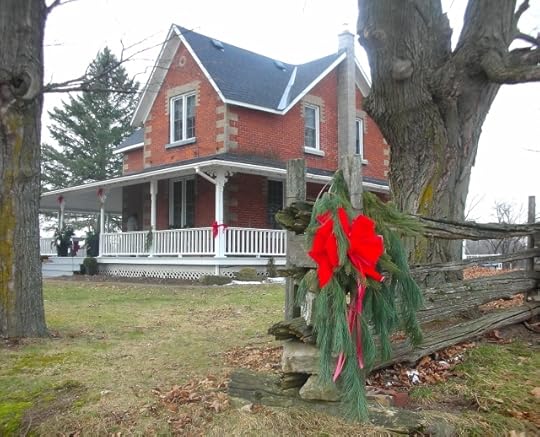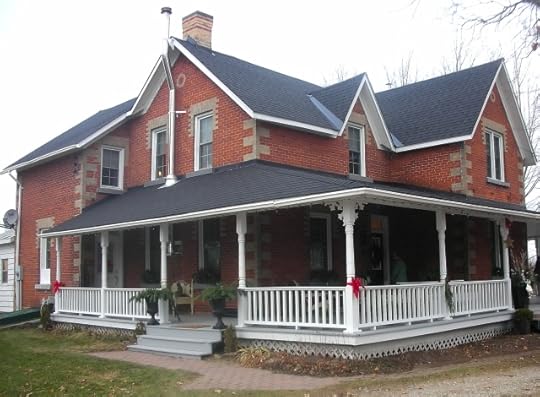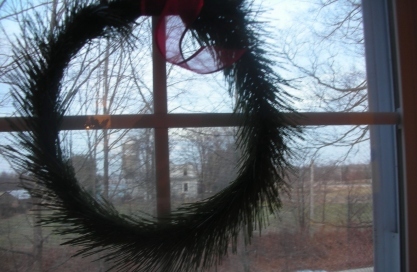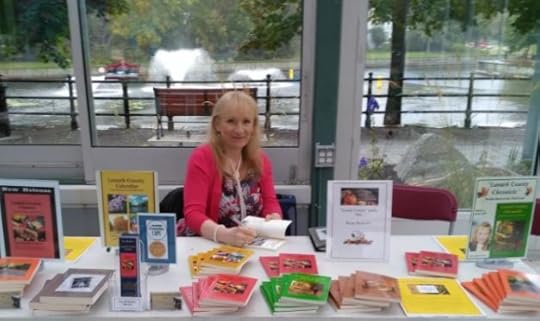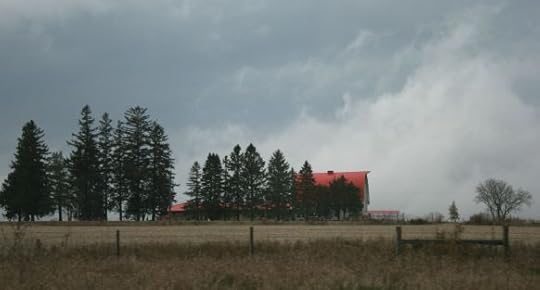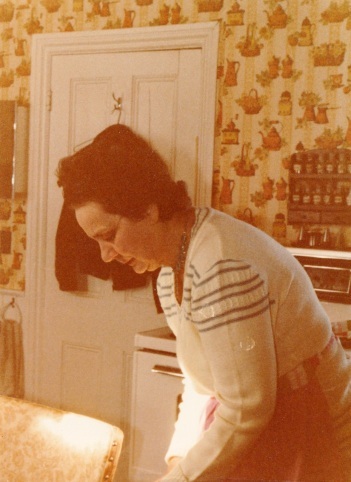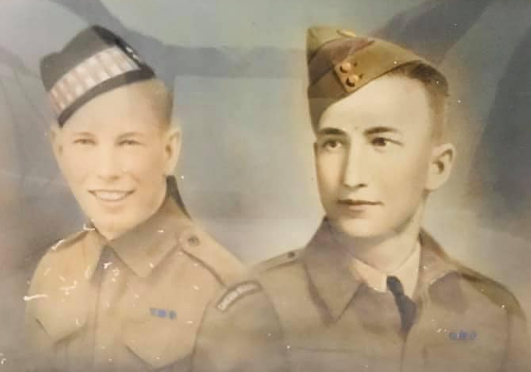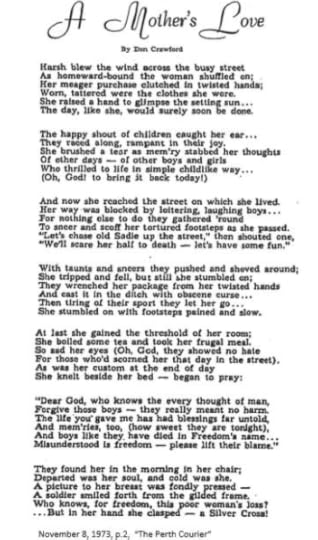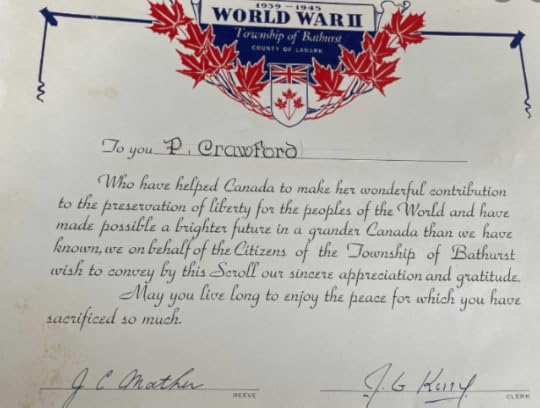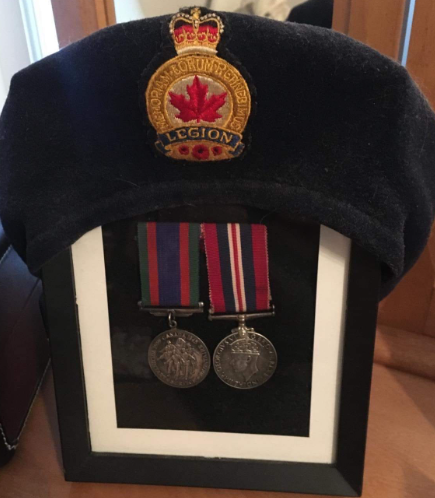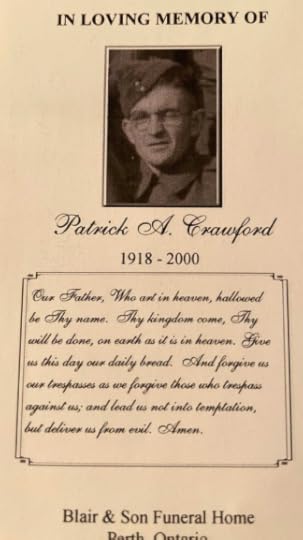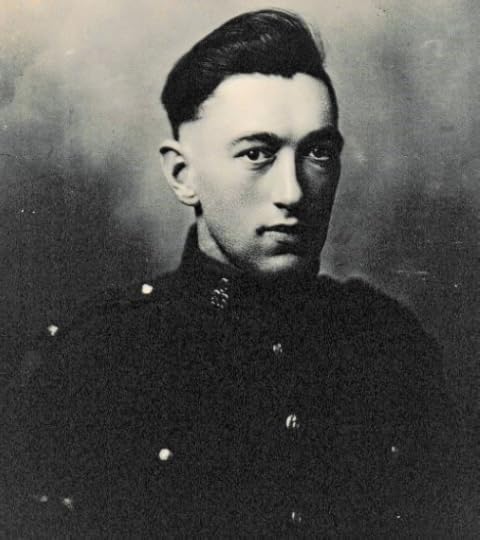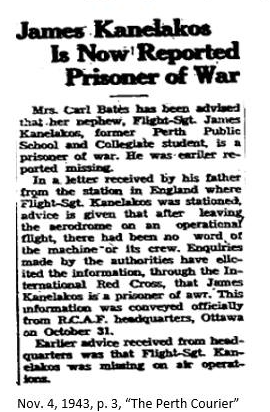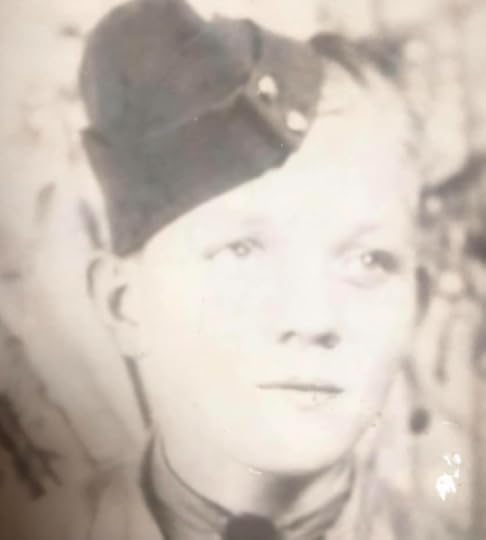Arlene Stafford-Wilson's Blog, page 4
March 10, 2025
Murphy Tragedy
There are only few visible reminders now, more than 150 years after the pioneer Murphy family suffered one of the saddest tragedies imaginable. Small traces, here and there, in the former North Burgess Township of Lanark County, like the sections of land where they farmed after arriving from County Armagh, Ireland.

A section of the former Murphy family land in North Burgess Township, Lanark County
Like many of the settlers, Francis ‘Frank’ Murphy (1797-1848), and his wife Margaret (Hughes) Murphy, (1800-1875), left the old country, hoping for a better life for themselves and their children. They set sail for the new world, as many did, at the height of the potato famine in Ireland. During those incredibly difficult years, so many from the emerald isle settled in the township of North Burgess, Lanark County that some called it, “the Irish invasion”.
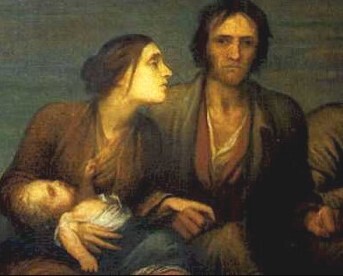
a painting depicting an Irish family onboard a ship headed for the New World
A Death at Sea
At least a million people died in Ireland during what became known as the “Great Famine” between 1841 and 1851. Two million people emigrated abroad during and after the famine. Thousands more perished on the long journey, or soon after their arrival in North America. Frank Murphy was one of those who died at sea on his way to Canada, in 1848, leaving Margaret and their children without a husband and father in a strange new land. Frank’s death would not be the last of the Murphy family misfortunes, and some say it was a bad omen of things to come.
At the time of the 1851 Census of North Burgess Township, Margaret, age 50, and five of her children were living on the farm: Mary, age 23, Terence, age 19, John, age 18, Susan, age 17 and Betsy, age 12. By 1861, only Margaret, Terence, and Betsy remained on the farm.
Frozen to Death

On February 6, 1874, Elizabeth ‘Betsy’ Murphy’s frozen body was found along the road in North Burgess Township, outside of Perth. Betsy, age 34, had traveled to Perth the previous evening with her brother, Terence, age 42, in their horse and buggy. When questioned about her death, Terence stated that his team of horses got away and he ran after them. He also claimed to be in an advanced state of intoxication and had little memory of what had happened on that fateful Friday evening on the way back from Perth.
Below, a transcription of an article (also below) which appeared in “The Perth Courier”, on February 13, 1874.
“An occurrence of a melancholy and somewhat shocking character took place in this vicinity within the past week, which calls for a close and scrutinizing examination by our authorities and court officials. We will briefly narrate the leading circumstances:
On Saturday morning last, the body of a young woman named Elizabeth Murphy was found dead by the roadside in the Township of North Burgess, about twelve miles from Perth, the unfortunate creature having been apparently frozen to death. The story of the sad affair is something like this.
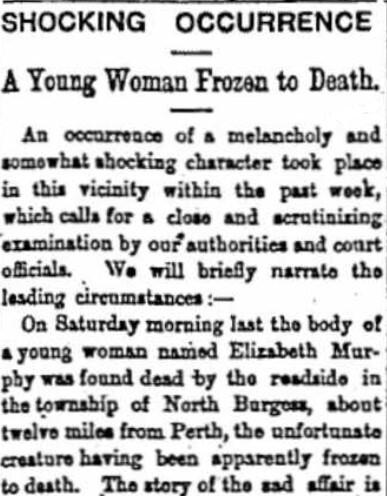
It seems that she and her brother, Terence Murphy, came to Perth on Friday forenoon and started for their home again in Burgess in the evening – it is believed, somewhat intoxicated. The next morning, the body of the girl was found on the road, lifeless, with marks of violence about the face and head. Her brother professes total ignorance as to what occurred before and after this had transpired, pleading an excess of intoxication which deprived him of the power of observing what took place around him, or in fact to himself – save in one thing: he has, he says, an indistinct recollection of the horses running away. To those who are charitable enough to take cognizance of this fact, only, and leave out other circumstances bearing on…
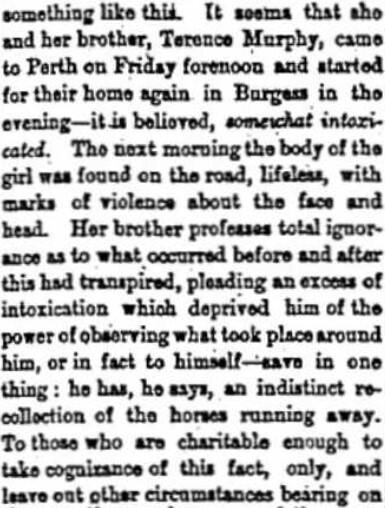
the case, the running away of the team may sufficiently account for the bruises that appeared upon the body of the girl. But it appears that the brother was not so drunk as he endeavored to make it appear. Parties giving evidence at the inquest swore that they saw him looking for his horses after they had run away, very far from being so far gone in intoxication as his testimony made it appear; and his own mother testified that when he got home, before commencing the search after the runaway animals, he was sober enough to make his own tea. Though this does not establish anything, of itself, still it convicts him of falsifying his evidence; and goes to prove at least an amount of cold-blooded indifference as to his sister’s fate, after she was thrown out of the sleigh which confounds our ideas of humanity and fraternal affliction. It is probably that the charge of inhumanity in not looking after his sister…

…instead of searching for his horses, on that freezing night, when by the best of evidence he knew she must be injured, is all that will be brought home to Murphy. Still it is an affair that demands investigation.
On Sunday last, upon proper representation of the affair having been made, Dr. Howden of Perth, Coroner, set out for the place and proceeded to hold an inquest on the remains. After hearing the evidence of several parties knowing more or less of the circumstances we have given above, including that of Terence Murphy himself, the Jury, through their foreman, Mr. Patrick Dooher, returned the following verdict: ”The Jury upon oath find that the deceased came to her death on the night of 6th February, through injury and exposure – the result of being left on the road while driving in company with her brother, Terence Murphy on the aforesaid night, and the Jury are…
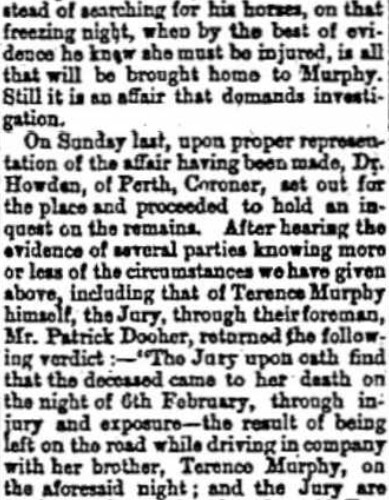
…further of the opinion that the said Terence Murphy was guilty of culpable neglect in not looking after the deceased, inasmuch as opportunity was afforded, and the evidence shown that he was not incapable through intoxication.”
On the Wednesday following, Coroner Howden issued a warrant for Murphy’s arrest, in order that the case might go before the Grand Jury at the approaching assizes, and, having been taken in charge by the constable, is now in jail awaiting the final disposal of the case.”
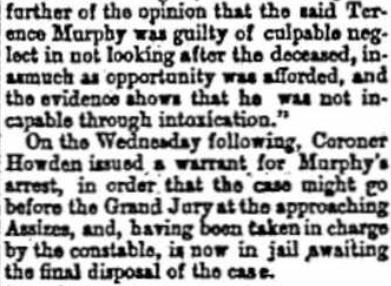
February 13, 1874, p. 2, 3, “The Perth Courier”
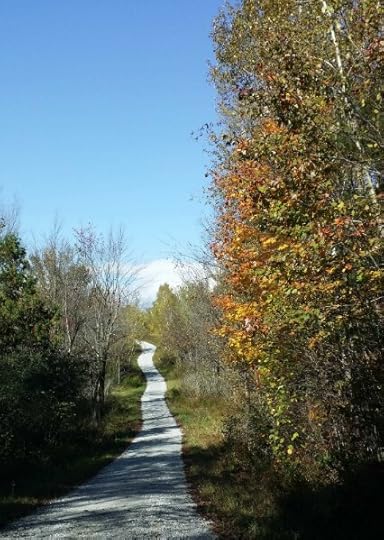
The hill where the tragedy occurred on the night of February 6, 1874

A tribute to Elizabeth, where she fell from the buggy and froze to death, on the McParland Road near Perth
Photo – Kay Ingalls, g-grandniece of Betsy Murphy
Third Tragedy
While we will never know for sure what happened on that fateful night when Elizabeth Murphy froze to death, we can be sure that her brother Terence Murphy, would have to live with the consequences of choices that were made. Did he assume that his sister, being young and healthy, in her early thirties, would have been fine left on her own while he chased after their team of horses? Did the amount of alcohol he’d consumed in Perth earlier that evening have any bearing on his decision-making abilities on that tragic evening?
What we may be sure of is that Terence Murphy would have felt the heavy weight of scorn from the people of Perth and the surrounding areas. Residents of small towns and rural communities tend to have very long memories, and even on his death, at age 83, there seemed to be little sympathy for Mr. Murphy as his demise was announced in a cold and detached statement on the front page of the local paper:

Comes in Threes
There is an old saying that, “Tragedy comes in threes”, and it seems fitting for the Murphy family, having been touched by three very dreadful and unusual deaths. Frank, the head of the family, father and husband, dying at sea on his way to Canada, Elizabeth freezing to death on a lonely snowy road, and Terence, choking to death on a piece of meat.
The tragedy of the Murphy family serves as a reminder to us that not all of the Lanark County Pioneer settlers thrived. Some of the settlers didn’t even survive the voyage from their homelands to set foot on the shores of Upper Canada. Some were not suited to farming and struggled with clearing their land and planting crops and eventually gave up and moved on. Although the economic situation during the potato famine in Ireland was grim, starting over again in a new place, so far from their families, may have caused many to have second thoughts about their choices.
The marker on McParland’s Road, the lone reminder of the hill where Elizabeth Murphy met her fate, still stands, as a silent memorial to that tragic night. It also serves to remind us of the Murphy family, who left County Armagh so long ago, in search of a better life. Like so many of our Lanark County pioneer families, they too were brave souls, leaving everyone and everything behind, their hearts filled with hopes and dreams of a better life for the generations that followed.
* * *

* * *
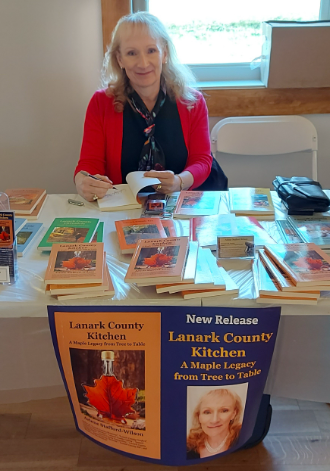
Arlene Stafford-Wilson
Honorary Life Member, Lanark County Genealogical Society
Member, Association of Professional Genealogists
Lanark County Pioneer Families Humanitarian Award 2023
Francois Bregha Storyteller Award
Author of : “Lanark County Kitchen: A Maple Legacy from Tree to Table”, “Lanark County Christmas”, “Lanark County Comfort”, “Lanark County Collection”, “Lanark County Calling”, “Lanark County Classics”, “Lanark County Connections”, “Lanark County Calendar”, “Lanark County Chronicle”, “Lanark County Kid”, & “Recipes & Recollections”, and “Lanark County Classrooms: Remembering Our School Days”
March 7, 2025
Irish Names & Surnames Explained
Traditional Irish Naming Patterns
Naming patterns are important when researching your family history. It has been a long standing custom in families around the world to name children after fathers, mothers, grandparents, important ancestors, relatives and friends. Middle names were often used for the preservation of a mother’s maiden name or the name of a prominent ancestor in that family. Names are very useful in tracking down lineages when there is little or no paper trail.
Names can give you clues to a person’s lineage, but other sources are still required in order to have genealogical proof. The Irish used a very particular naming pattern for children for children born beginning in the mid to late 1700s and through to the early to mid 1900s. It is important to note that not all Irish families followed the pattern although enough of them did that you can often use first names to learn more about an Irish ancestor’s unknown lineage. As with anything in genealogy, this should be proven with supporting documention, but Irish naming patterns are often helpful while building your family tree.
Traditional Irish Naming Pattern:

Naming Pattern Exceptions:
Naming patterns were sometimes affected by deaths in infancy. When a specific name was considered important within the family, the name would usually be given once again, to the next-born infant. In records, there are sometimes two or more children of the same name, baptized within the same family. Each baptism of this name, usually tells of the death of the older child of the same name.
Another example when the naming pattern is altered is when a child was stillborn, or very ill when born, or dying. Sadly, the child was baptized using a less-important family name, but the name of the paternal grandfather (or important ancestor) might be ‘reserved’ for a live birth, or for a child who was expected to live.
Surname Prefixes
Irish surnames of Gaelic origin were more common until Ireland fell under English rule. This led to the use of English versions of traditional Irish surnames. Many of these traditional names had prefixes:
“O”, “Fitz”, “Mc” and “Mac”
Mac or Mc – meaning “son of”
O – meaning “grandson of”
Fitz – meaning “son of” was sometimes substituted for the prefix ‘Mac’ or ‘Mc’ by many of the descendants of Anglo-Norman invaders.
For a period of time, English law in Ireland forbade the use of “O”, “Mc” and “Mac”, although “Fitz” was allowed. When researching your family name be aware that a name like Connor could have once been O’Connor.
The prefix O’ is unique to Ireland. It originates from the Gaelic word “ua,” meaning “grandson of.” Any name beginning with O’ is without question an Irish patronymic (from a male ancestor). The O’ surnames began in the 11th century in Ireland, before the Mc/Mac surnames. Examples of these surnames are O’Sullivan, O’Connor, O’Brien, and O’Leary.
Mc or Mac?
There is a myth about Scottish and Irish surnames that begin with the prefix Mac- or Mc-, that Mac- (as in MacDonald – son of Donald) designates a Scottish and Protestant heritage, where as Mc- (as in McCormick – son of Cormac) denotes an Irish Catholic family name. In fact there is no difference between these two prefixes. They may be either Irish or Scottish in origin and spelled different ways, with either prefix, even within the same family.
Mac- and Mc- both come from the Gaelic word “meic,” meaning “son of.”
“Micks”
In the early days of Irish settlement in Canada, such a large number of Irish names carried these prefixes that it became an ethnic slur for the Irish people to be called: “micks.”
Surnames that Describe the Profession of the Father
Some names beginning with Mc or Mac described the profession of the father.
MacMaster -“son of a master or religious leader”
Macpherson – “son of the parson,”
MacWard – “son of a poet or scribe,”
MacKenzie – “son of the fair one,”
MacDuff – “son of the dark one,”
McDowell – “son of the dark stranger.”.
Some families chose to conform to English laws, and some didn’t, which led to surname variations within the same family. Often Irish who emigrated dropped the prefixes when they arrived at their new countries of residence.
Top 200 Surnames in Ireland
Given Names and Meanings –
– BOYS
Given Names and Meanings
– GIRLS

Researching Your Irish Roots
Don’t forget Nicknames
Most given names in Ireland have at least one associated nickname. When names are recorded in birth, marriage, and death, or in church records, a nickname may have been used instead of the given name (Kate for Catherine or Billy for William, for example). Many nicknames are easy to spot, but others are less well known. For example, the nicknames used for Bridget include Bedelia, Bess, Bessie, Biddy, Breda, Briddy, Bride, or Bridie.
Nicknames may also lead the researcher astray if incorrect assumptions are used. While some might assume that Anty is a nickname for Anthony (a male), it is, in fact, more likely a nickname for Anastasia (a female). Lou is both a nickname for male children named Aloysius, Lewis/Louis, and Ulysses as well as female children names Louise or Lucinda or Mary-Louise, or Mary-Lou.
In conclusion, while naming patterns weren’t always followed exactly (for example if there were only one or two children, the father’s relatives always took precedence in the naming of the children), they were usually followed closely.
Remember, if you have an Irish ancestor, and don’t know anything of their parentage, you can use naming patterns to help in your search.
Best of luck researching your Irish ancestry!


Sources:
De Breffny, Brian. Guide on Irish Christian Names and their English equivalents. Article Christian Names in Ireland found for years 1670-1850. The Irish Ancestor, Vol.1 No. 1, pages 34-40.Coghlan, Ronan. Irish First Names. Belfast, Ireland: Appletree Press, 1985.Ó Corráin, Donnchadh, and Fidelma Maguire. Irish Names. 2nd ed. 1990. Reprint. Dublin, Ireland: The Lilliput Press, 1992.MacLysaght, Edward. The Surnames of Ireland. 6th ed. Dublin, Ireland: Irish Academic Press, 1985.Matheson, Sir Robert E. Special Report on Surnames in Ireland [Together with] Varieties and Synonyms of Surnames and Christian Names in Ireland. 1901. Reprint. Baltimore, Maryland: Genealogical Publishing Co., 1968.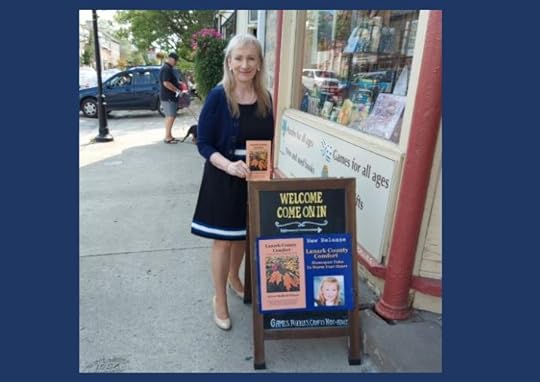
Arlene Stafford-Wilson
Honorary Life Member, Lanark County Genealogical Society
Member, Association of Professional Genealogists
Lanark County Pioneer Families Humanitarian Award
Francois Bregha Storyteller Award
Author of : “Lanark County Christmas”, “Lanark County Comfort”, “Lanark County Collection”, “Lanark County Calling”, “Lanark County Classics”, “Lanark County Connections”, “Lanark County Calendar”, “Lanark County Chronicle”, “Lanark County Kid”, & “Recipes & Recollections”, “Lanark County Kitchen: A Maple Legacy from Tree to Table”, and “Lanark County Classrooms: Remembering Our School Days”.
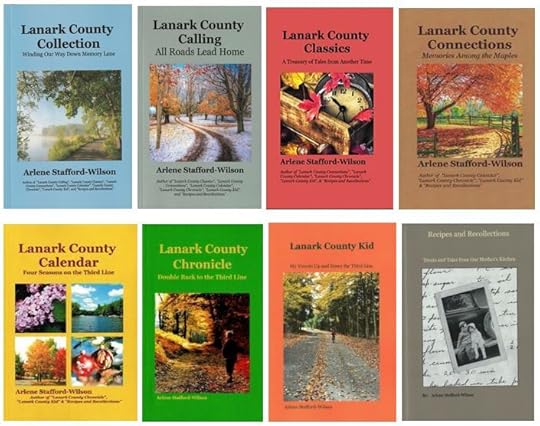

* * *
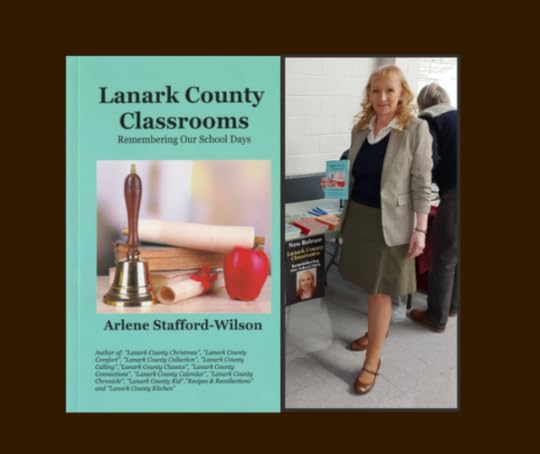
March 1, 2025
Weather Lore & Sayings
Weather – It’s one of our favourite topics of conversation, and has an effect on all of us, every day of the year. It dictates the way we dress, what we carry with us, and whether we schedule an activity or not. As Canadians we can’t wait for those first signs of spring and the melting snow, then in the summer we plan important family gatherings when the weather is warm and sunny, later, the fall ushers in a cooler more colourful change, and then there are the challenges of getting around during the winters months.
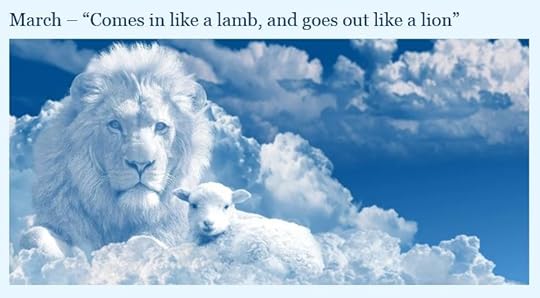
Farmers are more concerned with the weather, and discuss it more often, than any group of people I’ve met, and this becomes abundantly clear when you spend your youth in a rural area. Will there be enough rain, or too much rain, will a drought destroy hard work and money invested, will it be dry enough to harvest? These things are a constant source of worry for a farmer, and have a huge impact on whether it will be a financially successful season, or a fiscal disaster.
Our Dad had many of his own sayings about weather that he shared from time to time. He grew up on a farm in Drummond Township in the 1920s, then later did his own farming on the Third Line of Bathurst. Having spent so much of his life out in the country, he had also participated in countless conversations on the subject, and maybe had picked up a few weather sayings along the way.
Red Sky?
“Red sky at night, sailor’s delight,
Red sky at morning, sailors take warning”
Is it true that a bright pink sky at sunset means fair weather the next day?
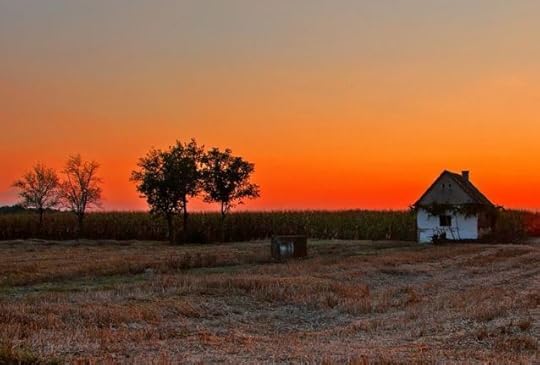
Dew on the Grass
“When the dew is on the grass,
Rain will never come to pass.
When grass is dry at morning light,
Look for rain before the night.”

Circle Around the Moon
“If a circle forms ‘round the moon,‘Twill rain soon.”

Leaves Turn Their Backs
“When leaves turn their back
‘tis a sign it’s going to rain.”
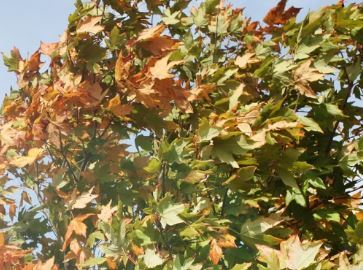
Birds Fly Low
“If birds fly low
expect rain and wind below.”

Moon Colours
“Pale moon rains; Red moon blows.”
White moon neither rains or snows.”

Wind Direction
“When the wind is in the east, it’s good for neither man nor beast.
When the wind is in the north, the old folk should not venture forth.
When the wind is in the south, it blows the bait in the fishes’ mouth.
When the wind is in the west, it is of all the winds the best.”
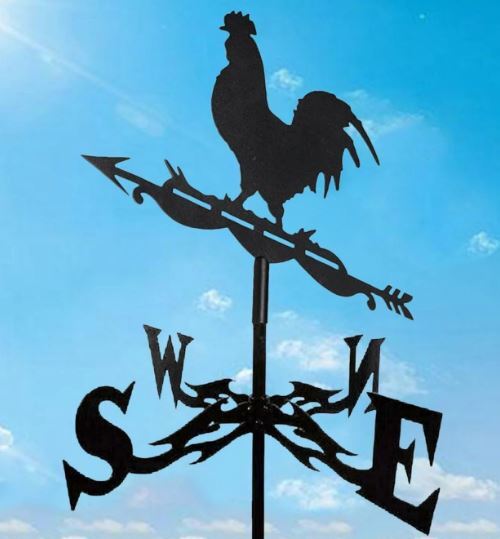
Rain Before Seven
“Rain before seven,
clear before eleven.”
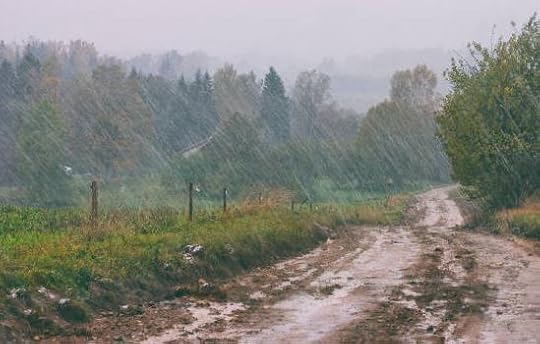
Quick Storm
“The sharper the blast
the sooner ‘tis past.”
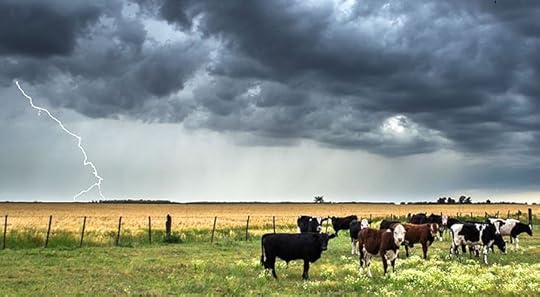
Sore Joints
“When your joints begin to ache,
rainy weather is at stake.”

Barometers
“When the glass falls low, prepare for a blow;
when the glass is high, let your kites fly.”
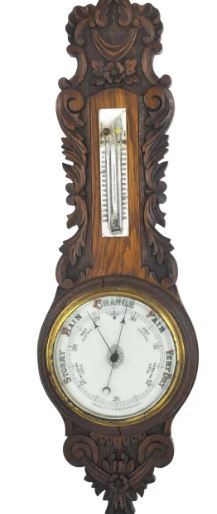
Bright Moon
“Clear Moon,
frost soon.”

Clouds
“When clouds appear like towers,
the Earth is refreshed by frequent showers.”

Sun Dog
“A Sun Dog at play
Rain is on the way.”
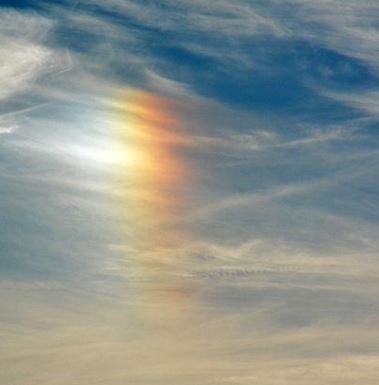
Cows
A cow with its tail to the west, makes weather the best;
a cow with its tail to the east, makes weather the least.”
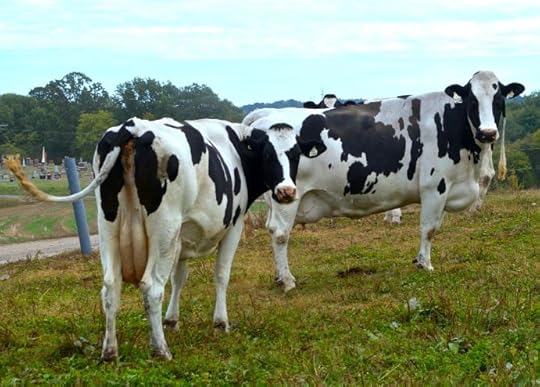
Bee Hives
“When the bees crowd out of their hive, the weather makes it good to be alive.
When the bees crowd into their hive again, it is a sign of thunder and of rain.”

Flies
“If a fly lands on your nose, swat it till it goes.
If the fly then lands again, it will bring back heavy rain.”
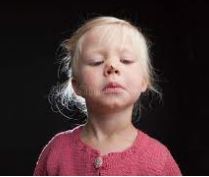
Candlemas (Feb. 2nd)
“If Candlemas Day, be bright and gay, saddle your horse, and go buy some hay
If Candlemas Day be cloudy and rough, stay by the fire, you’ll have enough.”
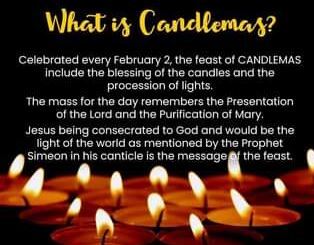
Roosters Crowing
“If the rooster goes crowing to bed;
He’ll certainly rise with a watery head.”
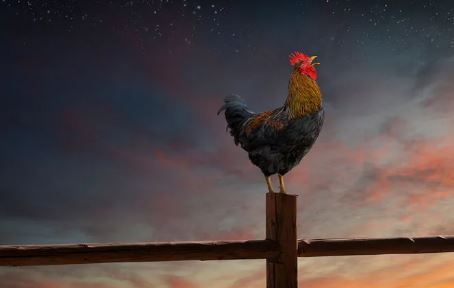
Ladybugs
“When Ladybugs swarm,
Expect a day that’s warm.”
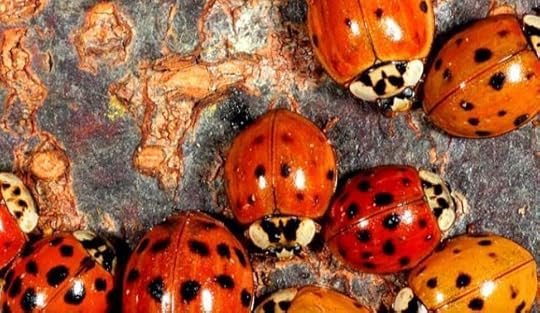
Cat’s Ears
“When kitty washes behind her ears,
we’ll soon be tasting heavens tears.”

Frogs
“Frogs will sing before the rain,
but in the sun they’re quiet again.”

Stars
“When the stars being to huddle,
the earth will soon become a puddle.”

Leaves
“If autumn leaves wither and hang on the boughs,
it foretells a frosty winter and much snow.“
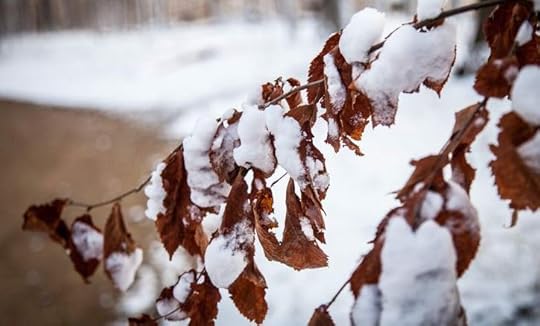
Hornet’s Nest
“See how high the hornet’s nest;
‘Twill tell how high the snow will rest.”
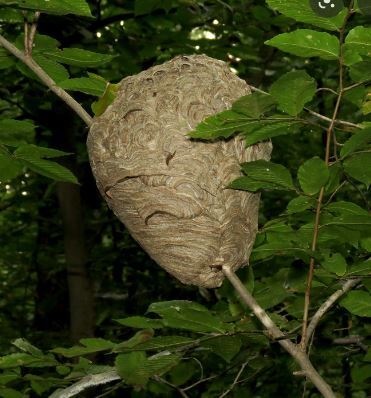
Snow
“If snow begins at mid-day
Expect a foot of it to lay.”

Corn Husks
“When the corn husks are thick ‘tis very clear,
The winter will be long and the weather severe.”
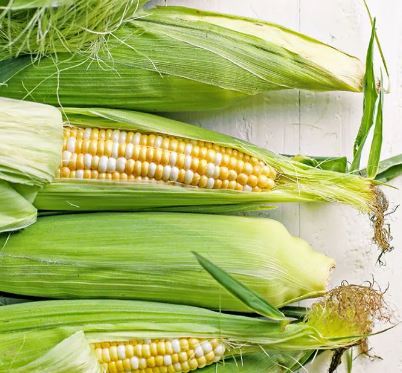
Onion Skins
“Onion skins very thin,
Mild winter coming in;
Onion skins thick and tough,
Coming winter cold and rough.”
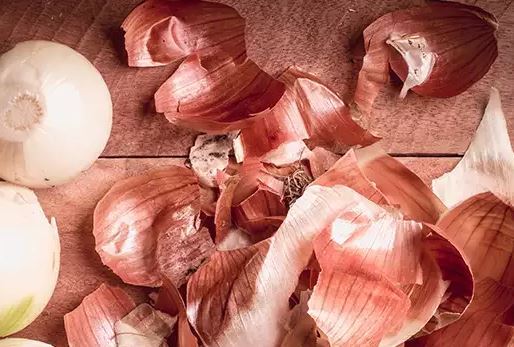
Cicadas/Heat-Bugs
“If you hear the first song of the Cicadas today,
Then frost is just six weeks away.“
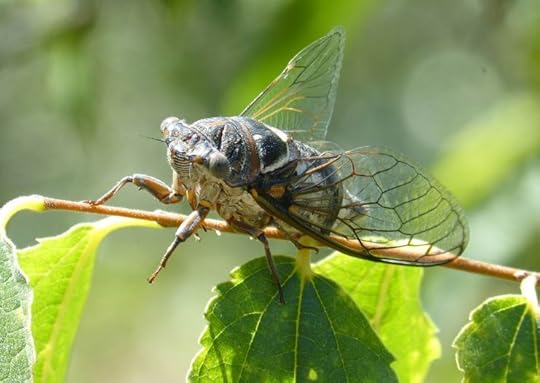
Dark Clouds
“When clouds look like black smoke
a wise man will put on his cloak.“

Weather Lore, Sayings, and Rhymes:
There are many sayings and lore related to the weather that have evolved over the years, some of them passed down through the generations, and some have been around so long that we have no idea of their origins. What we do know is that the reason these old sayings, old wives-tales, and expressions have been around this long is because many of them are true.
Long before there were weather apps for your phone, or Doppler radar, or the local forecasts, our ancestors were busy observing their natural surroundings. Through their observations, they noticed that animal behavior, clouds, and other elements of nature gave them some important clues about the weather to come.
Their weather folklore was often in the form of ‘sayings’, simple rhymes and anecdotes, and these were passed down from generation to generation.
Much of this old weather lore has been passed down through our families, and remains with us today.
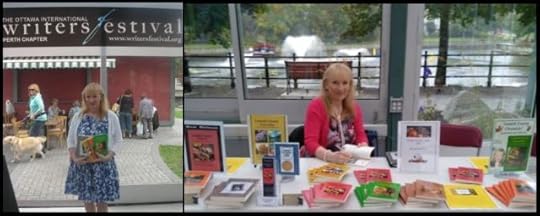
Arlene Stafford-Wilson
Member, Lanark County Genealogical Society
Member, Association of Professional Genealogists
Lanark County Pioneer Families Humanitarian Award
Francois Bregha Storyteller Award
Author of “Lanark County Christmas”, “Lanark County Comfort”, “Lanark County Collection”, “Lanark County Calling”, “Lanark County Classics”, “Lanark County Connections”, “Lanark County Calendar”, “Lanark County Chronicle”, “Lanark County Kid”, & “Recipes & Recollections”, and “Lanark County Kitchen: A Maple Legacy from Tree to Table”
New for Fall 2024:
“Lanark County Classrooms: Remembering Our School Days”
“A delightful collection of stories and memories from former students and teachers, spanning the 1940s through to the 1980s, schools in small towns, villages, and the rural one-room schools across Lanark County”

January 23, 2025
You Might Be Scottish if…..

In 1820 and 1821, a thousands of Scottish settlers arrived from the Glasgow area and settled in the Dalhousie, Lanark, North Sherbrooke, and Ramsay townships in Lanark County. They brought their traditions and customs with them from the old country, like the celebration of their famous poet, Robbie Burns.
January 25thOn January 25th our thoughts turn to all things Scottish as we prepare to celebrate the birthday of Robbie Burns, perhaps one of the most famous poets born and bred in Scotland. Although Robbie died at the tender age of 37, he left a legacy of poetry unmatched, and has become one of Scotland’s most beloved characters.
Today, there are people of Scottish descent scattered all over the world, and though they may be far from the land of their ancestors, they still share the traits passed down from those who came before.
Do you have any Scottish blood flowing through your veins?
Here are the top 20 ways to tell if you are Scottish:You might be Scottish if……1. You could swear before you could count.
2. You’ll wait at a store counter for a nickel of change.
3. You still enjoy watching ‘Braveheart’ even though it’s more Hollywood than historical.
4. You prefer to measure things in feet, pounds, and gallons.
5. Your eyes are a lovely shade of blue or green or a light hazel-brown
6. Even though you know what haggis is made with…you still eat it.
7. Your eyes tear up at the sound of bagpipes playing ‘Amazing Grace’.
8. Your speech becomes more colourful after a wee nip or two
9. If someone insults those dear to you, they’ve may have a fight on their hands
10. You’ve got lovely skin, and pleasant facial features
11. You’re a hard worker, and always make sure that every job is done well
12. You’ve likely remained loyal to the same sports team for years, even if they always lose
13. You’re strong willed, with a steely determination.
14. You have a stubborn streak and have been known to hold a grudge
15. You would dive into the street to retrieve a penny during a parade and risk death and injury.
16. You re-use your plastic bags and keep them in a drawer.
17. You’ve got a wonderful sense of humour and enjoy a joke or two
18. You stop talking and listen when bagpipes are playing.
19. You are fiercely loyal to family and friends and extremely proud of your heritage
20. Above all, you possess a strong sense of honour, and always keep your word.
……….
Can you namethese famous Scots?(answers at the bottom of the page)






‘Auld Lang Syne’, was written by the iconic Scottish poet Robbie Burns, and on January 25th each year Scots all over the world celebrate the day he was born in 1759. Many Scottish folk attend what is known as ‘Burns Night’ where they will feast on a traditional meal of the infamous ‘haggis’.

In honour of Robbie Burns here is a traditional Scottish recipe for Haggis:
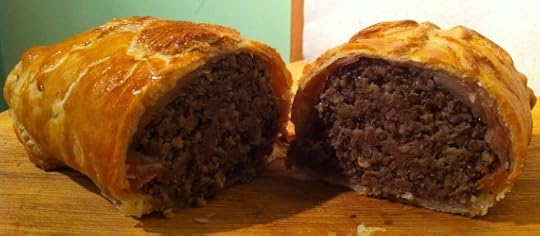
1 set of sheep’s heart, lungs and liver (cleaned by a butcher)
One beef bung (intestine)
3 c finely chopped suet
1 c medium ground oatmeal
2 medium onions, finely chopped
1 c beef stock
1 tsp salt
½ tsp pepper
1 tsp nutmeg
½ tsp mace
Method:
Trim off fat and sinew from the sheep’s intestine and, discard the windpipe.
Place in a large pan, cover with water and bring to a boil
Reduce heat, simmer for 1 hour until tender and cool
Chop the meat into fine pieces and combine in a large bowl with the suet, oatmeal, finely onions, beef stock, salt, pepper, nutmeg and mace
Mix well.
Stuff the meat and spices mixture into the beef ‘bung’ which should be over half full, then press out the air and tie the open ends tightly with string
Leave room to expand or it may burst while cooking
Place in a pot and cover with water, and bring to a boil. Reduce heat and simmer, covered, for 3 hours.
Serve hot with “champit tatties and bashit neeps” (mashed/creamed potato and turnip).
For added flavour, you can add some nutmeg to the potatoes and allspice to the turnip. Some people like to pour a little whisky over their haggis – Drambuie may be used as well.
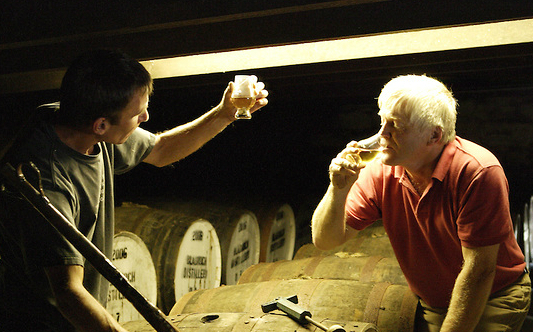
Whether you are planning to attend a ‘Burns Night’ celebration this January 25th, or just having a small gathering at your home, don’t forget to recite the traditional Selkirk Grace before enjoying your haggis along with a wee dram of your favourite Scotch! Happy Robbie Burns Day! Och Aye!
Selkirk Grace
“Some hae meat and canna eat,
and some wad eat that want it,
but we hae meat and we can eat,
and sae the Lord be thankit.”
………
Answers – Scottish Celebrities : 1. Annie Lennox, 2. Sean Connery, 3. Isla Fisher, 4. Ewan McGregor, 5. Sheena Easton, 6. Gerard Butler
………
Many of the pioneer settlers in Lanark County, Ontario, Canada came from Scotland.
For more information on researching your Scottish ancestors who settled in Eastern Ontario:
Lanark County Genealogical Society
………
Scottish Genealogical Society, Edinburgh, Scotland
……….
Scotland – Births & Baptisms 1564-1950
……….
National Library of Scotland – Genealogical Research
……….
………..
(This post is dedicated to the memory of James ‘Jim’ Gebbie, my husband Kevin’s uncle, who passed away in 2013 in his native Scotland. Jim was a kind soul, and a fine gentleman, and I had the privilege of spending some time with him on his visit to Canada in the summer of 2011. He shared many of his stories with us, of life as a boy growing up in Hamilton, Lanarkshire, Scotland. We hope that wherever Jim is now, they will be serving up his wee glass of scotch that he enjoyed so much before dinner each evening. Rest in peace Jim.)………
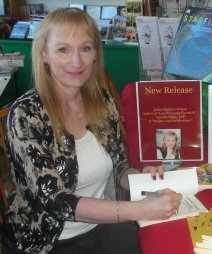
Arlene Stafford-Wilson
Honorary Life Member, Lanark County Genealogical SocietyLanark County Pioneer Families Humanitarian AwardFrancois Bregha Storyteller AwardMember, Association of Professional GenealogistsAuthor of : “Lanark County Christmas”, “Lanark County Comfort”, “Lanark County Collection”, “Lanark County Calling”, “Lanark County Classics”, “Lanark County Connections”, “Lanark County Calendar”, “Lanark County Chronicle”, “Lanark County Kid”, & “Recipes & Recollections”, “Lanark County Kitchen: A Maple Legacy from Tree to Table”, and “Lanark County Classrooms: Remembering Our School Days”.December 30, 2024
Lanark County Scottish New Year – Hogmanay
Among the earliest settlers to Lanark County were Scots who came from Glasgow and Lanarkshire, after the Napoleonic war. These immigrants settled mostly in the townships of Dalhousie, Lanark, North Sherbrooke and Ramsay. In 1820, approximately 400 families arrived in Lanark County, bringing their skills in cotton weaving, carpentry, blacksmithing and shoe-making. Many of these Scots also brought their traditions from the old country, and one of their most beloved was their New Year’s known as Hogmanay.

Many of these Hogmanay traditions were brought to Scotland by the Vikings in the early 8th and 9th centuries. In some parts of Scotland, like Shetland, the Viking influence remains strong, and New Year is still called ‘Yules’, derived from the Scandinavian word for the midwinter festival of Yule.
Christmas was not celebrated as a festival and was banned in Scotland for around 400 years, from the end of the 17th century to the 1950s. This was because of the Protestant Reformation movement, when it was believed that Christmas was a Catholic feast, and should be banned.

Hogmanay Traditions
It was customary to clean the house, and take out the ashes from the fire. It was also a requirement to clear all your debts before “the bells” sound midnight, the underlying belief was to clear out the remains of the old year, and have a clean slate to welcome in a young New Year.
First Footing
First Footing refers to the first person to cross your threshold after midnight on New Year’s Eve. They must be dark-haired, which is an ancient tradition going back to the days of the Viking invasions, when a fair-haired person could mean trouble for your household.
They must be bearing gifts, and specifically – a half-bottle of scotch whisky, a generous piece of black bun, a few pieces of coal. The whisky and black bun is to ensure that the home has food and drink in the coming year, and the coal is symbolic that the home will be warm in the year ahead.
Once the first footer crosses the threshold (and they can be turned away if they are light-haired), they are led through the entire home. When the tour is finished they place the coal on the fire, offer whiskey to the family, and the black bun is sliced and shared. Next, they kiss every female in the home, and wish them all the best in the new year.

“The first-footer should be dark complexioned,
and their name begins with straight, not curvy letters.“

First Footing Rules
The first footer brings all the luck, good or bad, for the year ahead.
They should be male and dark-haired.
They may not be doctors, members of the clergy or grave-diggers, and must not have eyebrows that meet in the middle.
They should bring whiskey, coal, and black bun.
A first footer may claim a kiss from every woman present.
If your First Footer doesn’t meet all the requirements, then the household is heading for an unlucky year.

A toast is made by the First-Footer before he leaves – ” A good new year to all and many may you see”
Torchlight Parade
Fire also plays a special role in Hogmanay customs, and originates in the pagan traditions of the pre-Christian Celts. In modern times, the annual Torchlight Procession in Edinburgh continues with thousands marching through the city center carrying blazing torches.
Scottish Black Bun
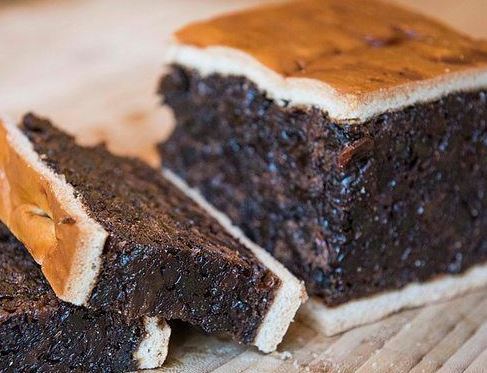
Black Bun recipe:
Pastry Case
3 c flour
1/2 tsp baking powder
6 Tbsp lard
6 Tbsp butter
1 pinch salt
Cold water
Filling
2 ¾ c seedless raisins
2 Tbsp brandy
1 Tbsp milk
2 ¾ c currants
1/3 c chopped almonds
1 pinch black pepper
¼ c mixed peel
1 ½ c flour
1/3 c brown sugar
1 tsp allspice
1/2 tsp ground ginger
1/2 tsp ground cinnamon
1/2 tsp baking powder
1 large egg beaten
Method
Grease an 8-inch loaf tin. Blend the lard and butter into the flour and salt and mix in cold water to make a stiff dough. This will be used to line the tin. Roll out the pastry and slice into six pieces to fit the bottom, top and all four sides of the tin. Press into the tin, pressing the overlapped sections to seal.
Mix the raisins, currants, almonds, peel and sugar together. Sift in the flour, add the spices and baking powder, then mix together with the brandy and most of the egg. Add enough milk to moisten.
Place the filling into the lined tin and top with the pastry lid, sealing the edges. Lightly score the surface with a fork.
Brush the top with milk to create a glaze.
Bake in a pre-heated oven at 325F 2-3 hours. Test with a skewer which should come out clean; if not, continue baking.
Cool in the tin and then on a wire rack.
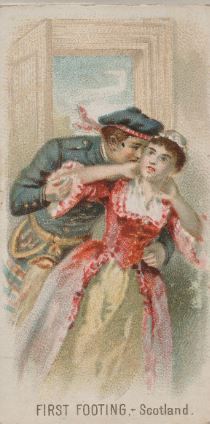
A First-Footer kisses every woman in the household
Auld Lang Syne
Immediately after midnight it is traditional to sing Robert Burns‘ “Auld Lang Syne”. Burns published his version of this traditional New Year’s song in 1788, although it is said the original was written 80 years before that.
To sing ‘Auld Lang Syne’ the traditional Scottish way, a circle is formed and hands are joined with the person on either side of you. At the beginning of the last verse, everyone crosses their arms across their chest, so the right hand reaches out to the neighbour. When the song ends, everyone rushes to the middle, still holding hands.
“Should auld acquaintance be forgot and never brought to mind?
Should auld acquaintance be forgot and auld lang syne
For auld lang syne, my dear, for auld lang syne,
We’ll take a cup o kindness yet, for auld lang syne.”
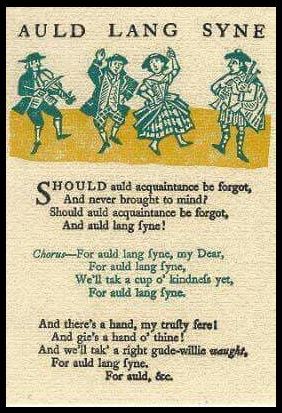
New Year’s Morning
Saining the HouseThere is a Scottish highland custom of saining (blessing) the house and and the livestock, and is still practised today, mostly in rural areas. The ritual involves the drinking of water believed to be magic which must be sourced from a river ford that’s said to be crossed by both the living and the dead. Next is the burning of juniper branches, enough to fill the house with smoke, and is believed to cleanse the house and drive away evil spirits.
After these two rituals are completed, the windows and doors are opened to let in fresh, New Year air, and a wee nip of whisky is taken before indulging in a hearty Scottish breakfast.

“Out with the Old, and in with the New!”

Scottish New Year’s Blessing

Happy New Year!
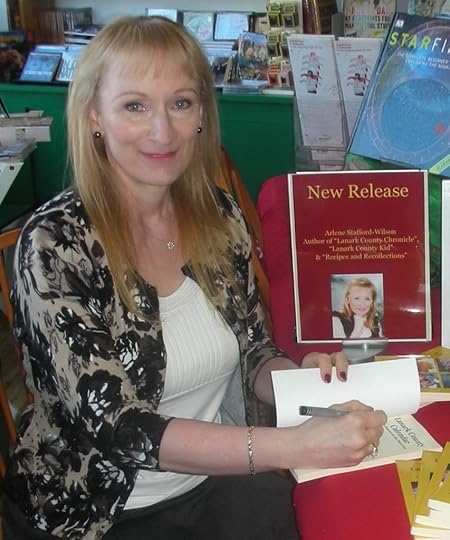
Arlene Stafford-Wilson
Honorary Life Member, Lanark County Genealogical Society
Member, Association of Professional Genealogists
Lanark County Pioneer Families Humanitarian Award
Francois Bregha Storyteller Award
Author of : “Lanark County Christmas”, “Lanark County Comfort”, “Lanark County Collection”, “Lanark County Calling”, “Lanark County Classics”, “Lanark County Connections”, “Lanark County Calendar”, “Lanark County Chronicle”, “Lanark County Kid”, & “Recipes & Recollections”, “Lanark County Kitchen: A Maple Legacy from Tree to Table”, and “Lanark County Classrooms: Remembering Our School Days”
December 5, 2024
Homecoming: Stafford House
For some people it’s the music of the season, the smell of the turkey, or the glittering gifts sitting under the tree; but for me it was a special visit to the house where I grew up, a homecoming, after a long absence of twenty-two years.
It doesn’t really seem that long ago since our father passed away in 1992, and our mother moved to Perth. I almost half expected to see him coming from the garage, carrying a tangled mess of Christmas lights, asking me if I’d hold the ladder steady, while he fastened the wire clamps onto the big spruce tree at the front of the house.
When I first heard from Wendy Parker, the current owner of our former home, that it was to be part of a Christmas House Tour, my thoughts turned back to days gone by, of the heavenly smells of Mother’s baking, bright cards in the mailbox at the end of the lane, and special concerts and plays at Calvin Church. There would be eight houses in total on the Christmas House Tour, and the event was sponsored by the Canadian Federation of University Women, and the money raised would help support education in the community.
Christie LakeKevin and I arrived early that afternoon, with ample time to visit some of my old, familiar haunts. We drove first to Christie Lake, a place I knew well, the bridge at Jordan’s, where I’d jumped many times into the cool, clear waters. Hot days spent riding bikes with friends on the Third Line, and when that bridge was finally in sight it was like seeing an oasis in the middle of the desert. What a welcome sight it was! And even on this cold, December day, the lake appeared as serene and as lovely as it always did, calm and blue, waiting patiently for cottage season, and the laughter of little ones, the parties and music of the older ones, and a place of peace and serenity for the eldest ones. We drove along the shore, and then headed back up the Third Line.
The bridge at Jordan’s Cottages – at Christie Lake – a place where we often swam as children, on hot summer days, jumping off the bridge into the cool, clear water.Calvin ChurchA visit home would not be complete without making a stop at the church where our Mother brought us every Sunday. This was where we celebrated baptisms, witnessed weddings, and met for comfort after funerals. This was the setting for the Strawberry Socials, Easter Sunday white gloves and hats, the lighting of the advent candles and Christmas Eve. The church stands proudly on Cameron Side Road, looking solid as ever, a place for meeting neighbours, friends, a place for worship, a place for solitude, and a shelter from the storms and turmoil of the outside world.
Calvin United Church, Cameron Side Road, Tay Valley Township, Lanark County, OntarioRailroad TracksWe headed back to the Fourth Line and rounded the curve, up to the railroad tracks. There were many strolls along these tracks to the duck pond, watching the beavers at play, seeing the ducks return year after year, raise their babies, and leave at the end of the season. Memories of sitting under the big tree along the tracks with my brother Roger, as we patiently placed a penny each on the rails, sat back, waited for the train to go by, then retrieved our flattened pennies. Many hours in my youth were spent waiting for trains, listening to the sounds of the lonely whistles, and hearing the rumbling and chugging down the tracks as they headed for Perth.
Railroad crossing, on Perkins’ Road, near the 4th Line, Bathurst (Tay Valley Township), Lanark CountyA view from the railroad tracks, near the 4th line, Bathurst Township (Tay Valley Township)The gentle slope, under the tree, near the railroad tracks, where Arlene Stafford and her brother, Roger Stafford, often sat on the hot summer days, placing a penny or two on the tracks, and waiting for the trains to go by, and then retrieving the flattened pennies.The CreekWe continued up the side road to the little creek and as soon as I spotted it, I remembered scooping up the tadpoles in my sand pail, and then pouring them into a big glass pickle jar to set on the window ledge in my bedroom. Every spring it was a ritual to catch some of these quick, black tadpoles, or pollywogs, as we called them, and watch them for hours, swimming contentedly in the jar, until we dumped them back into the creek.
The little creek, on Perkin’s road, not far from the Stafford House, where the Stafford children collected tadpoles in jars, on warm spring afternoons.The lowlands, behind the Stafford House, where all the Stafford children learned how to skateThe LowlandsThe lowlands, across from the creek were still flooded, and ice was already beginning to form. It was back on these lowlands that we all learned how to skate; not on a flat, pristine ice surface in an arena, but through the weeds, and over the bumps, and up and down the imperfections of a farmer’s field. The fact that our skates were old hand-me-downs was the least of our worries!
We drove up the side road to the laneway and parked the car. As we walked up the lane, the slopes and curves of the land were as familiar to me as if I’d never left, and we made our way to the door and knocked.
Kevin Wilson, at the base of the laneway, leading up to the Stafford HouseHeritage PerthChristmas House Tour
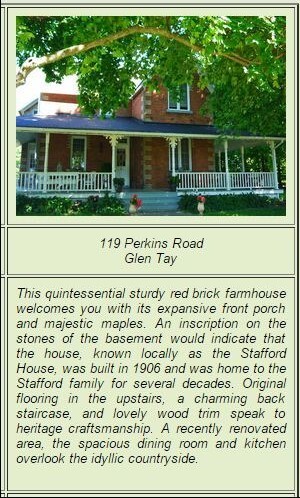
When the door opened and we stepped inside, the home was beautifully decorated for the season. Wendy’s elaborate table was laid out with her mother’s china and cutlery with festive accents fit for a holiday gathering. The whole house in fact, was lovely and bright, adorned with reds and greens and touches of gold and shimmer. As we walked through the rooms, one by one, they were warm and inviting, and almost made me forget that something was missing – the smell of fresh baked bread, a permanent aroma in our house as Mother baked daily for a family of seven.
Photo AlbumThere was a lovely display arranged on a table in the den, an album of our Stafford family photos and copies of ‘Lanark County Kid’ and ‘Lanark County Chronicles’. I thought that they looked very much at home in this well cared-for house, so lovingly maintained and obviously cherished.
A view to the east, with the former home of Chris and Leanore Perkins framed in the wreathMargery Conboy, (front), with Wendy Parker, viewing photos of the Stafford family when they lived in the houseA view to the west, at sundownNeighboursPerhaps what made the house seem so much like home, after so many years away, were the familiar faces, friends and neighbours, who came to share the memories, of the things that once were; and to celebrate a new Christmas season, content and happy in each other’s company. Though Wendy’s is the newest face among us, it’s as if she’d been with us all along. Wendy is a gracious hostess, and we all had a wonderful time chatting about the house, and catching up on the news in the neighbourhood. We discovered a few years ago through Ancestry DNA that Wendy is a cousin, through the Irish McGarry family who settled in Drummond Township in 1816.
MemoriesI walked through the house, room by room, and the memories of the past lurked playfully around every corner. The house seemed to remember me, and the walls and ceilings surrounded me with love, and kept me warm and safe once again. It was a special day, and a rare treat to be back home.
………….
Thank-you!Heartfelt thanks to Wendy and to the members of the Canadian Federation of University Women, for making our visit possible, and many thanks also to old friends and neighbours Margery Conboy, Beverly Ferlatte, (the late) Betty Miller, Eleanor Paul and her lovely daughter Heather, for joining us on our trip down memory lane!
The AfterglowAs I continue to bask in the glow of our visit to the old house, I will leave you with this quote from Thomas Wolfe:
“But why had he always felt so strongly the magnetic pull of home, why had he thought so much about it and remembered it with such blazing accuracy, if it did not matter, and if this little town, and the immortal hills around it, was not the only home he had on earth? He did not know. All that he knew was that the years flow by like water, and that one day we come home again.”
……..
In MemoryThis story – in memory of Betty Miller (1934-2015) – “gone, but not forgotten”
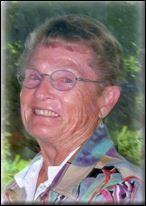
……..
(Heritage Perth Christmas House Tour 2014)
Arlene Stafford-Wilson
Honorary Life Member, Lanark County Genealogical SocietyFrancois Bregha Storyteller AwardLanark County Pioneer Families Humanitarian AwardMember, Association of Professional GenealogistsAuthor of : “Lanark County Christmas”, “Lanark County Comfort”, “Lanark County Collection”, “Lanark County Calling”, “Lanark County Classics”, “Lanark County Connections”, “Lanark County Calendar”, “Lanark County Chronicle”, “Lanark County Kid”, & “Recipes & Recollections”, “Lanark County Kitchen: A Maple Legacy from Tree to Table”, and “Lanark County Classrooms: Remembering Our School Days”.November 18, 2024
Ottawa Book Fair
Some photos and highlights from the Ottawa Small Press Book Fair, November 16th, 2024, at the Tom Brown Arena, 141 Bayview Station Road.
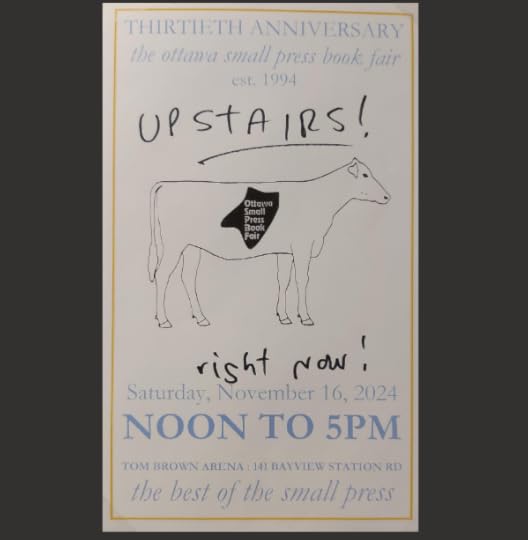
On a bright sunny November morning, we set out for the Tom Brown arena, with copies of, “Lanark County Classrooms: Remembering Our School Days”, along with eleven other books from the popular ‘Lanark County’ series.
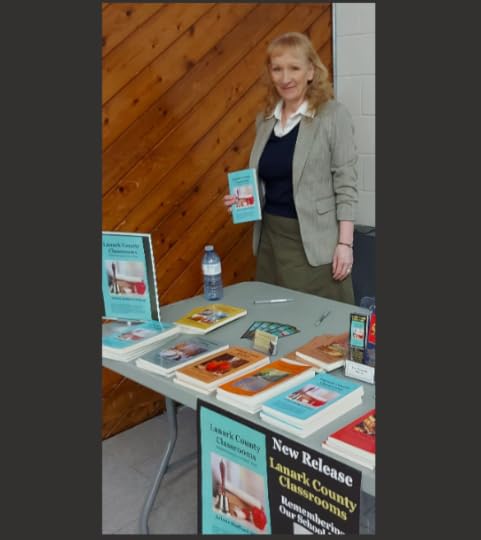
For those not familiar with Mechanicsville, it is situated west of downtown Ottawa, bordered to the north by the Ottawa River, with Scott Street as the southern border, and Parkdale Avenue to the west.

A plaque situated near the entrance, provided some information on the facility, built in 1978, under Mayor Lorry Greenberg.
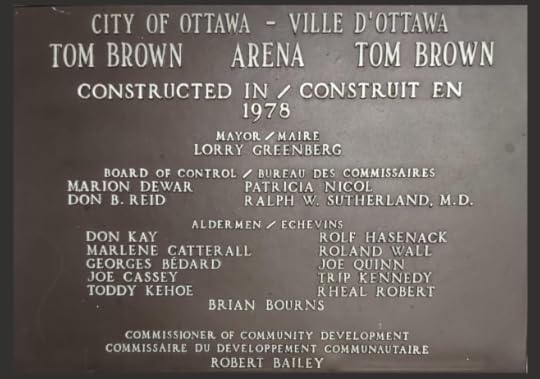
Another display featured some of the history of the Brown family in Ottawa, and their positive impact on Mechanicsville.
Keith Brown, (in the photo below), – the nephew of Tom Brown, for whom the arena is named. Tom played a key role in establishing the sports community in the area known as Mechanicsville, in Ottawa. The Brown family were among the first to settle in Mechanicsville.
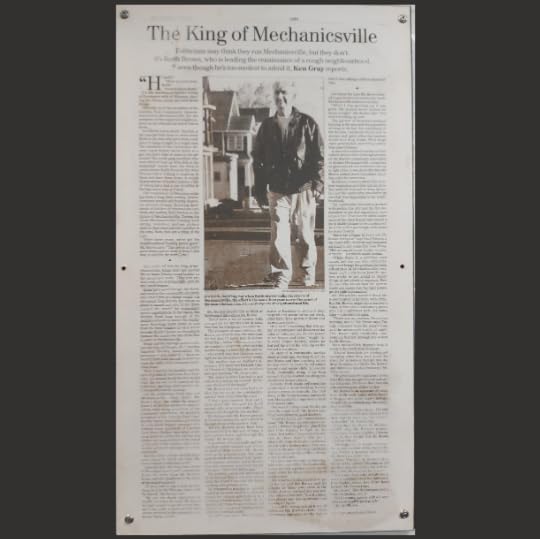
The Book Fair was held on the 2nd floor of the facility, and the venue was busy throughout the day with authors, publishers, and a lively crowd of visitors to the event.
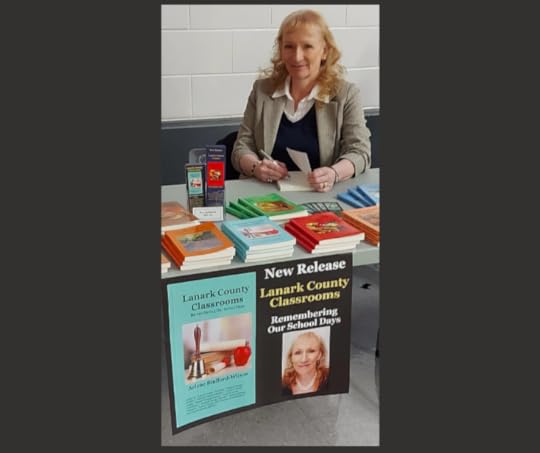
2024 marked the 30th anniversary of the event, and many return year after year and reconnect with old friends.

There were a variety of publications available, some to suit every taste.
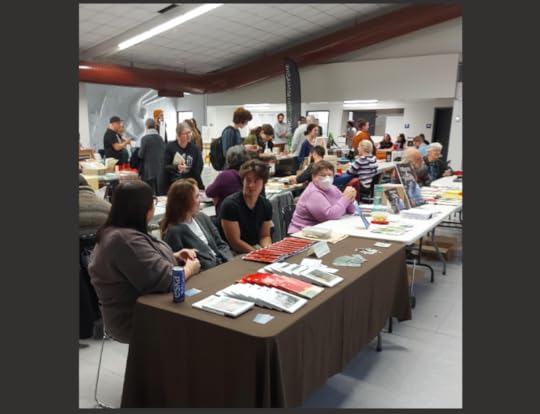
On the Friday evening, before the event, a poetry reading was held in the east end of the city.

There were a surprising number of young authors featuring their work.

The venue was busy with visitors arriving before the event officially began at 12 noon.
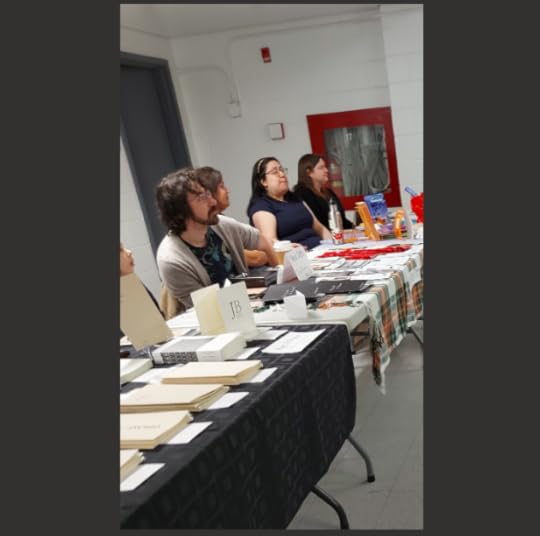
There were many interesting conversations throughout the day, and many unique offerings from the literary world.
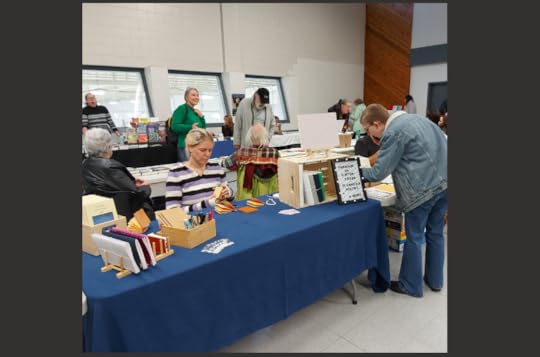
Busy days always pass by quickly, and before long it was time to pack up our book display.

Many thanks to my husband, Kevin, who takes all of the photos of the book events, including the exterior shots of the arena and the commemorative plaques.
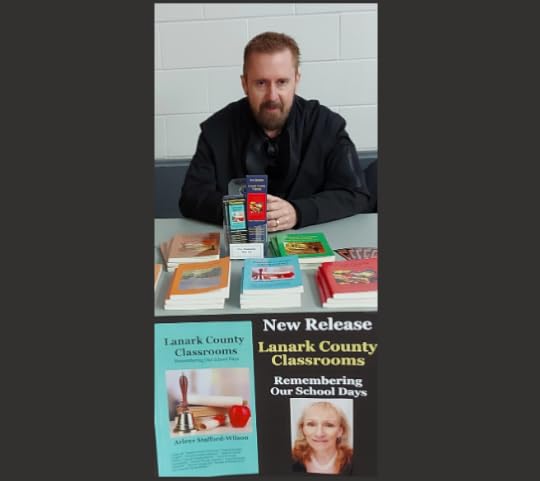
The book fair was a great opportunity to share some Lanark County history. Many former residents dropped by to chat, including people from Flower Station, from Middleville, and the Perth area. There was even a visitor from Brooke Valley, not far from our old homestead. It was nice having a chance to share some stories of the one-room schools, of the old general stores, and of homemade Hallowe’en treats, and our school Christmas concerts – things that made Lanark County such a special place.
As our busy day wound down it was time to say goodbye to the friendly folks of Mechanicsville and their spacious and comfortable venue. Thank-you for hosting us, and making us feel so welcome.

Arlene Stafford-Wilson
Honorary Life Member, Lanark County Genealogical Society
Lanark County Pioneer Families Humanitarian Award 2023
Francois Bregha Storyteller Award
Member, Association of Professional Genealogists
Author of : “Lanark County Kitchen: A Maple Legacy from Tree to Table”, “Lanark County Christmas”, “Lanark County Comfort”, “Lanark County Collection”, “Lanark County Calling”, “Lanark County Classics”, “Lanark County Connections”, “Lanark County Calendar”, “Lanark County Chronicle”, “Lanark County Kid”, & “Recipes & Recollections”, and “Lanark County Classrooms: Remembering Our School Days”
November 16, 2024
Scotch Line Cheese Factory
Opened in 1879
The Scotch Line Cheese Factory opened in 1879, and was established as a co-operative business, with many local farmers contributing their milk. Cheese, cheese curds, and butter were produced there, and the quality of their products had a reputation for excellence, and were in demand locally.
Some of the names of people who played an important role at the Scotch Line Cheese Factory through the years:
Abercrombie, Allen,
Avery, Bowes,
Burnham, Dodds,
Ferrier, Gibson,
Hough, Kellar,
Mackler, McGinnis,
Noonan, Partridge,
Rancier, Wiltsie
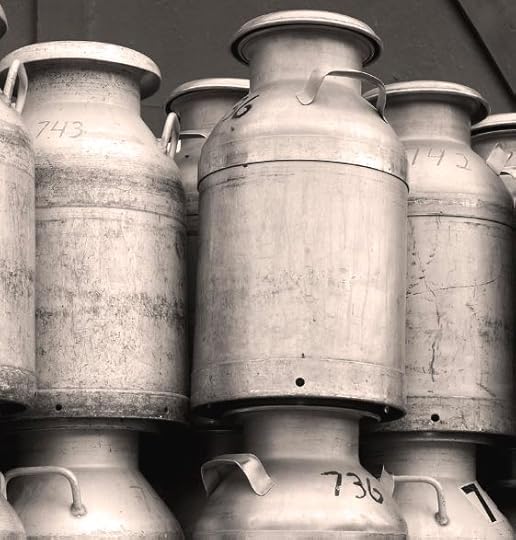
“The cheese had to be placed
in the car, five tiers high,
and the work
was very exhaustive.”

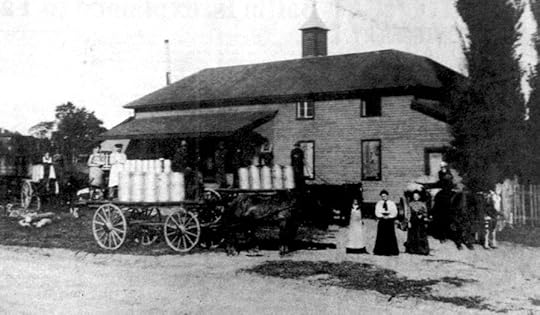
photo: Perth Remembered
Photo was taken around 1910 at the Scotch Line Cheese Factory
Ben Avery, the Cheese Maker, is in a white apron, standing beside the milk cans.
James Gibson and his nephew, John A. Gibson is on the wagon to the left side of the photo.
Sarah MacLennan and Mrs. James Allan are standing in the group of three women to the right of the photo.
December 1913 Fire
“Neighbours saved some fancy cheese the maker, Mr. Hough had, for a dairy show,
but the last day’s make of butter, about 350 lbs, was burned.”
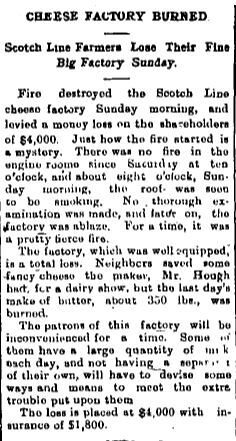
December 26, 1913, p. 1, “The Perth Courier”
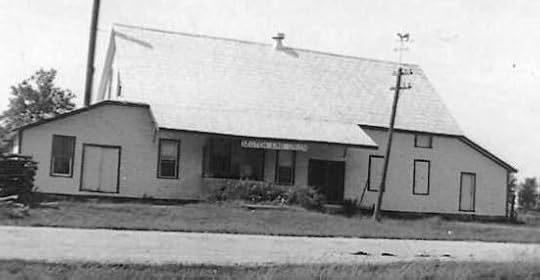
Scotch Line Cheese Factory, rebuilt, as it appeared in 1932

George McGinnis Retires
After 17 Years


Nov. 20, 1941, p. 2, “The Perth Courier”
November 1965 Fire

“Fire of undetermined cause razed the Scotch Line Union Cheese Factory for an estimated loss of $40,000 Tuesday.
Rural Fire Chief, Arnold Darou and a ten-man crew fought the blaze from 5:30 p.m. until midnight. Saved was the nearby house owned by Clifford Kelford, occupied by the plant’s Cheese Maker, Lewis Kellar, who was away when the outbreak occurred.
Mervyn G. Ferrier, R.R. 3, Perth, Secretary Treasurer of the co-operatively owned factory yesterday consulted with the insurance company which had the plant covered.
“The fire represents a distinct blow to the 30 owner-members of the plant”, he said, “but a small consolation is the fact that the fire did not strike during our busy season.”
The factory normally operates from May until October 31st and had just recently been shut down for the winter.
Mr. Ferrier said the directors had as yet made no decision about rebuilding.
The factory was originally constructed 86 years ago, in 1879, and rebuilt in 1914.
Mr. Ferrier reported that last year’s total production of 130,000 lbs of cheese had been increased 20% this year. This means that this year a total of some 1,400,000 lbs of milk were processed. This year, too, a new can-washer had been acquired.
The enterprise has played an intimate part in the economy of the area, and a complete set of books detailing its history has been kept up to date since inception 13 years after Confederation.
Mr. Ferrier has been Secretary-Treasurer for 24 years. Before him, Charlie Dodds kept the books 21 years and Mr. Ferrier’s father, John, was Secretary Treasurer for the 20 years before that. Cecil Dodds, President, has held that office for 24 years. Vice President is Victor Mackler.
The Scotch Line Union Cheese Factory provided some of the milk which went into Perth’s Mammoth 22,000 lb cheese of bygone age, the world’s largest.
The decreased winter-time flow of milk provided by the owner-members will be shipped to various district dairies. Granted the factory is rebuilt by next May the normal seasonal milk surplus will go to the plant.”
Nov. 11, 1965, p. 1 “The Perth Courier”
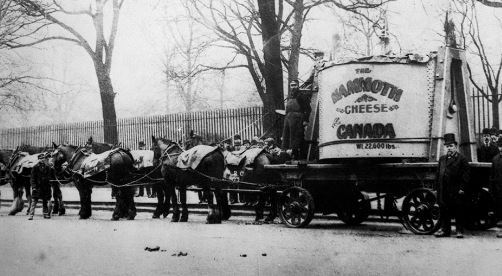
John Wiltsie was Cheese Maker in 1893 when the Mammoth Cheese was produced
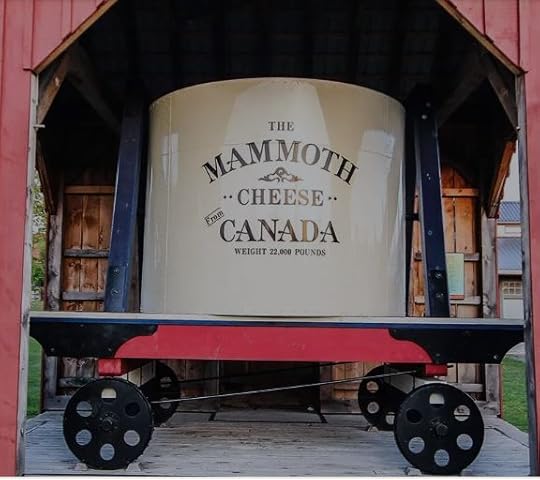
Lanark County’s famous Mammoth Cheese, a 22,000 lb cheese, shown on display in the Tay Basin, next to Crystal Palace.
Twelve area cheese makers donated milk to the project in 1893, for display at the World’s Exposition, to promote Canadian cheese around the world.
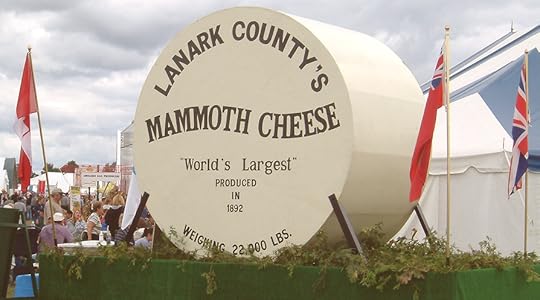
(The site of the Scotch Line Cheese Factory was later the location for Cliff Kelford’s Auto Parts business.)
*
The history of the Scotch Line Cheese Factory, and the Mammoth Cheese – part of our Lanark County Heritage, memories to be recorded and preserved for generations to come.

Arlene Stafford-Wilson
Honorary Life Member, Lanark County Genealogical Society
Member, Association of Professional Genealogists
Lanark County Pioneer Families Humanitarian Award
Francois Bregha Storyteller Award
Member, Association of Professional Genealogists
Author of : “Lanark County Christmas”, “Lanark County Comfort”, “Lanark County Collection”, “Lanark County Calling”, “Lanark County Classics”, “Lanark County Connections”, “Lanark County Calendar”, “Lanark County Chronicle”, “Lanark County Kid”, & “Recipes & Recollections”, “Lanark County Kitchen: A Maple Legacy from Tree to Table”, and “Lanark County Classroom: Remembering Our School Days.”
November 13, 2024
Grey November Skies
It was one of those mornings in the late fall, when the sky was so grey that you couldn’t tell whether it was daylight, or still dark outside. Halloween was over for another year, and the snow hadn’t begun for the season, to remind us that Christmas was coming. It was just one of those four or five dark, grey, lifeless weeks in between the colourful fall, and the bright snowy winter, when Mother Nature didn’t seem to know what to do.
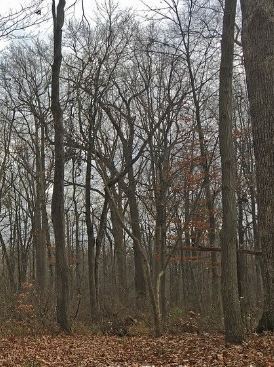
I headed downstairs that Saturday morning, and took a quick look at the clock on the kitchen wall. With the sky so overcast, I couldn’t even guess what time it was, and I didn’t have a clock in my bedroom upstairs. All I knew was the weekend was here, so I didn’t have to go back to Glen Tay School for another two days.
The whole house seemed gloomy. When I got to the bottom of the stairs, and opened the door, the living room was empty. Where was everybody?
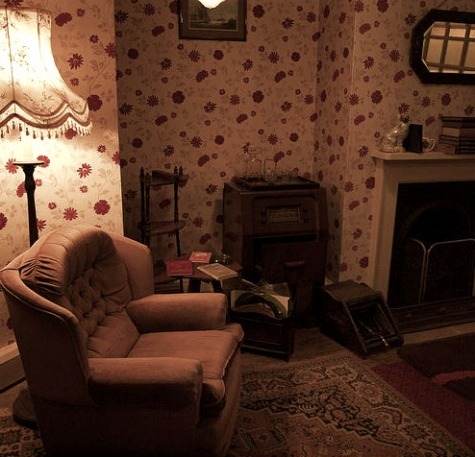
The only room that seemed to be lit up in the old house was the kitchen, and as I walked through the living room, and got close enough to see, Mother was in full production, as usual.
Audry (Rutherford) Stafford in her kitchen, 3rd Line of Bathurst Township, Lanark CountyShe had the old aluminum meat grinder attached to the kitchen table, and had bags of flour and sugar, and boxes of baking soda and baking powder lined up along the edge.
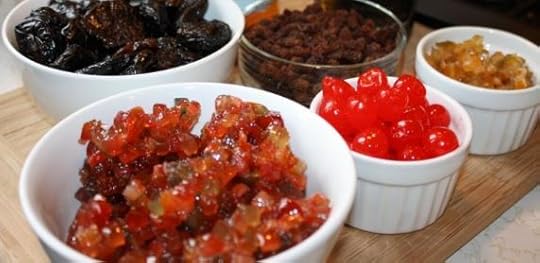
There were packages of raisins and candied pineapple, and currants and cherries, all over the top of the freezer, as though they were waiting their turn to go into the huge white ceramic mixing bowl. It looked as though some kind of dried fruit was making its way through the meat grinder, and dropping into one of the melamine bowls waiting below.
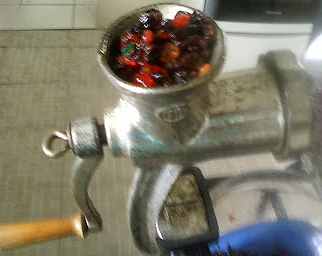
“Can you run down to Cavanagh’s, and pick up some molasses for me?”, she said without looking up from the meat grinder. “I forgot to pick some up at the IGA last night, and I’ll need some for the Christmas cake.”
“Sure.”, I said, and picked up the three quarters that were already sitting there waiting for me, at the end of the table.

I grabbed my blue corduroy jacket off of the hook, and headed outside. As soon as I opened the door the cold air hit me, and I remembered how the weather had been getting cooler and cooler these past weeks. It felt cold enough to snow, I thought to myself, and I picked up my old, red, battered bike, still lying on the same spot where I’d left it in the yard, the night before.

Brrr. It felt even colder once I was on the bike and moving. The lane was downhill, and I coasted all the way onto the Third Line. I had a quick check for cars, and turned right, still coasting for a bit, then I began to pedal. Ugh, Heney’s dogs!, I thought. I needed a newer, faster bike, or a car, or a spaceship; something to get me past Heney’s faster.
As soon as I saw Conboy’s house, I pedaled like mad. I should have eaten breakfast first, I thought. I could use some energy.
I made it past Heney’s unscathed. They didn’t even come out barking that day. They must have been feeding them or something, I thought. Whew! That was easy.
I was moving pretty fast, and made it to Cavanagh’s in no time. Helen was working, and she pointed out the molasses, and asked how everyone was doing, just like she always did.

I paid for the molasses, and picked up my bike where I’d left it; propped up against the front entrance of the store.
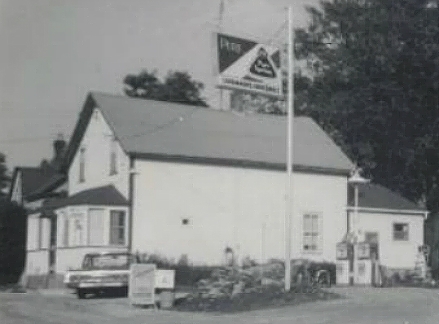
Since it was Saturday, I decided that I’d take the long way home. I just didn’t feel like riding past Heney’s again and was sure those dogs would be back out on the road, full of food now, and ready to chase me up the Third Line.
I crossed the road and headed up Cameron’s side road. I passed S.S.# 4 school, and was heading up toward Calvin Church.

This part of the trip was a bit harder, as it was uphill all the way.
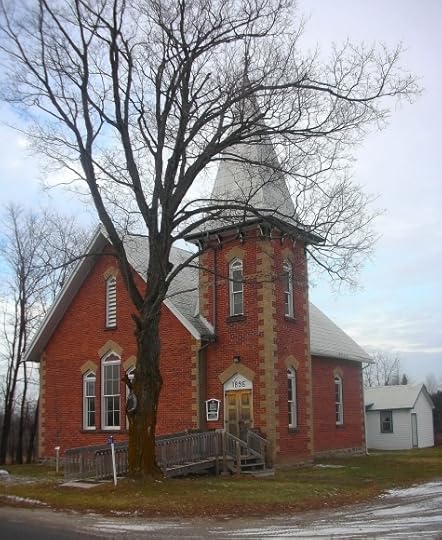
I passed the church, then up the road a bit more, and turned right onto the Fourth Line. It wasn’t long until I was down near Calvin and Marion Jordan’s place, and I slowed down a bit, as I rounded the corner, and headed toward the railroad tracks.
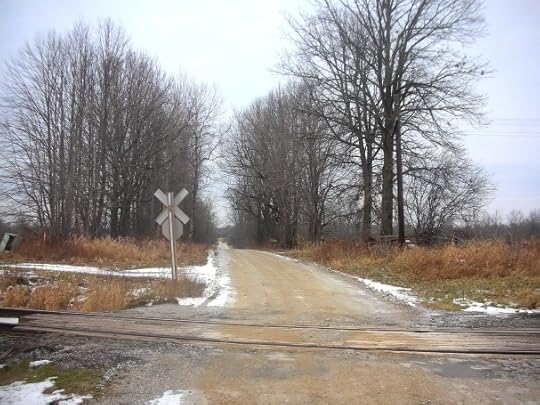
I glanced down into the ditches and spots where I could usually find some flowers to bring home for Mother, but there was no colour in the ditches that day, and even the cattails had gone to seed in the swamp and looked dirty,white and furry. I didn’t see anything worth bringing home for a bouquet.
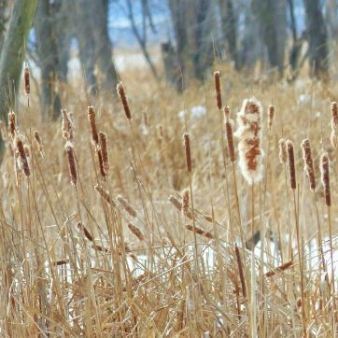
When I finally arrived back in the yard, I threw down my bike, and walked into the kitchen. I could smell the cake batter as soon as I opened the door. The batter for the Christmas Cake was pinkish. I’m not sure why it was that colour; maybe it was juice from the cherries. Mother had saved the bowl for me to clean, and it was sitting on the edge of the table. Mother said she would add the molasses in with the ground fruit, and that sure worked for me. I loved cleaning out the cake batter bowls. This was my kind of breakfast!

I’m not sure why the Christmas Cake had to be made so early. Mother said it had to ‘ripen’ and I was never really sure what she meant by that. It wasn’t like a green banana, or one of the green apples from back in the orchard. Still, it was part of the process of making the cake each year, and there was no point in arguing.
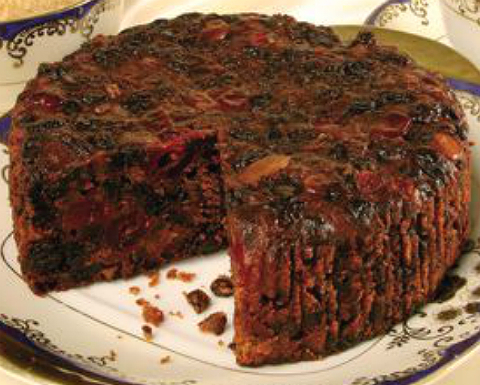
No matter what the reason for making the Christmas Cake in what seemed like the drabbest, dreariest part of the year, I liked to think of it as kind of a light at the end of a tunnel. It was so grey and colourless outside. The bright leaves were lying, lifeless on the ground. The birds had left the yard. I couldn’t find one bright, pretty flower to bring Mother for a bouquet; not even a cattail. Nature seemed to be in limbo; not sure what to do next.

Making the Christmas cake was the first sign that the brightest season of the year was on its way. In just a matter of weeks we’d be celebrating Christmas. Bit by bit, in the days ahead, we’d be making progress on our preparations. The Christmas cards would be signed and addressed. Betty Miller and Frances Dixon would begin organizing the Christmas concert at Calvin Church, and we’d all have our parts to study, and new songs to learn.
Dad would be stringing the Christmas lights on the big spruce tree near the house, any day now. Soon, we would be strolling back into the bush to size up the possible candidates for the Christmas tree, that would grace the corner of our living room.
Before too long, pans of fudge would be prepared, and all sorts of cookies and squares would be baked and stored. Crepe paper streamers would be brought out of storage, and old decorations glued and repaired.
So the grey days, I concluded to myself, were days of preparation. These were the days when we would have time to spend getting ready for Christmas. They were the days when we wouldn’t be distracted by the bright sun, and green grass, to go outside and play, but would stay indoors, and stroke things off of our to-do lists.
In its wisdom, Nature had given us quiet, thoughtful days like these,to focus on the things to come, because Christmas would be upon us in no time at all.
……………………………………………
Granny Rutherford’s Dark Fruit Cake(should be baked a few weeks ahead, and allowed to ripen before Christmas)2 cups raisins
1 1/2 cups of cherries
1 cup currants
1 cup dates
1 1/2 tsp cinnamon
1 1/2 cups seeded raisins
1 cup pecans
1 1/2 cups mixed dried fruit
1/2 cup candied pineapple
1/4 tsp. mace
1/2 tsp. ginger
1/2 tsp nutmeg
1 tsp salt
3 cups flour
1 cup butter
1 1/2 tsp baking powder
1 1/4 cup brown sugar
1/4 tsp cloves
6 eggs
1/2 cup molasses
1/3 cup cold coffee
Mix fruit and nuts (may grind coarse or fine, as desired)
sift flour and spices and mix well
cream butter, and add sugar and eggs
Add dry ingredients
Bake at 300 degrees for 3 – 3 1/2 hours
………..
Allow to cool on baking racks
(double-wrap in plastic, then double-wrap in foil, and store in a cool dry place to ripen)…………
Who was Granny Rutherford?Dorothy Woolsey, born in Lincolnshire, England, was just sixteen years old when her mother Mary-Jane Foster Woolsey, passed away. She often told the story of how they dyed her favourite red coat – black for her mother’s funeral. In 1909 her father, William Woolsey, brought Dorothy and her siblings over to Canada, because his eldest daughter, Edith, had weak lungs, and the doctor advised him the air in Canada would be better for her.

They settled first in Winnipeg, and Dorothy’s older sister Florence, married, and moved to Saskatoon. Dorothy went to visit, and she met a handsome young man named Charles Rutherford, a Mechanical Engineer, who came to Canada from St. Lawrence County, New York, to seek his fortune. Dorothy and Charles fell in love, married, and settled in Edmonton, where their children Dorothea ‘Dolly’, Mildred ‘Mill’, Audry, Muriel, and Jack were born.
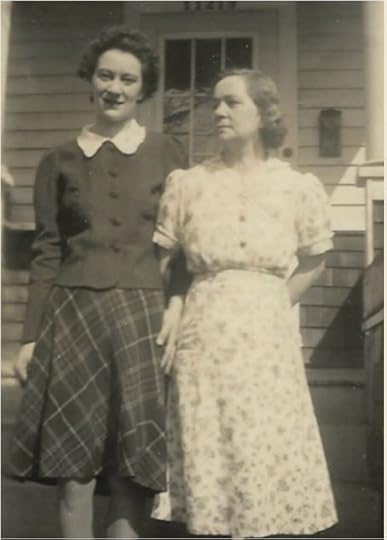
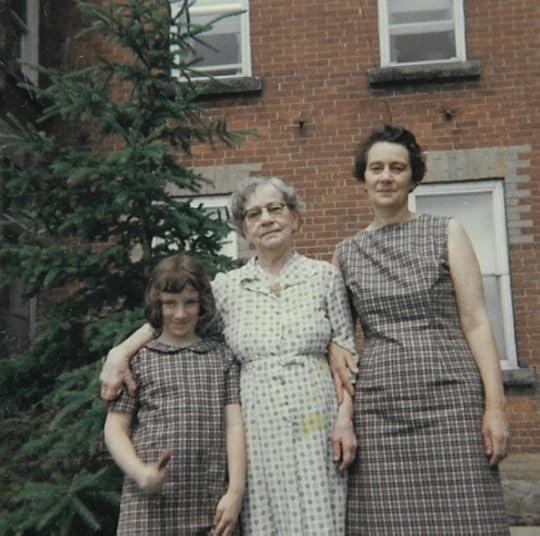
…………………………………………………………………….
Christmas Cake recipe – in “Recipes and Recollections – Treats and Tales From Our Mother’s Kitchen, available in local stores or online. ISBN 978-0-9877026-0-9
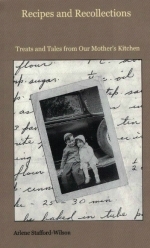
* * *
Arlene Stafford-Wilson
Honorary Life Member, Lanark County Genealogical SocietyLanark County Pioneer Families Humanitarian AwardFrancois Bregha Storyteller AwardMember, Association of Professional GenealogistsAuthor of : “Lanark County Christmas”, “Lanark County Comfort”, “Lanark County Collection”, “Lanark County Calling”, “Lanark County Classics”, “Lanark County Connections”, “Lanark County Calendar”, “Lanark County Chronicle”, “Lanark County Kid”, & “Recipes & Recollections”, “Lanark County Kitchen: A Maple Legacy from Tree to Table”, and “Lanark County Classroom: Remembering Our School Days”.November 9, 2024
WWII Soldiers from Perth and Area
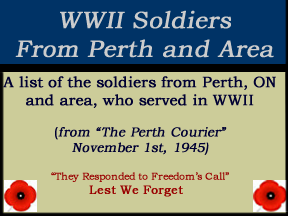


Robert Borthwick and his brother, Joseph Borthwick – born and raised in Perth, then returned after the war and raised their own families there.
submitted by: Erin Borthwick

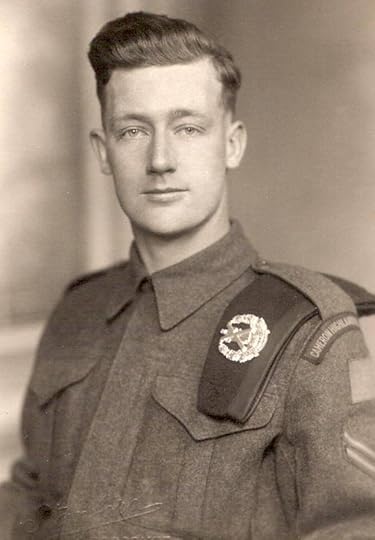

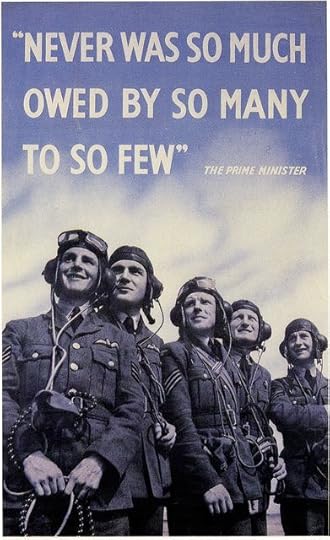
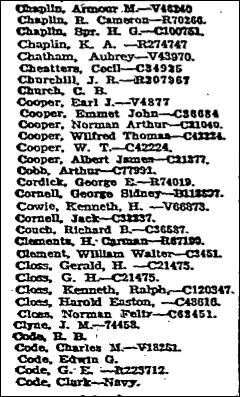

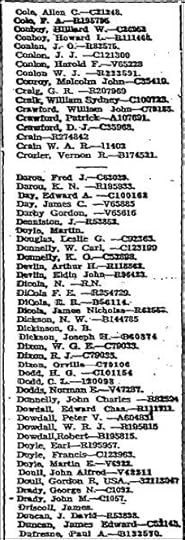
Crawford, Donald
Another poem by Don Crawford:

Crawford, Patrick
source for items on Patrick Crawford: Joanne Crawford.
source: Joanne Crawford


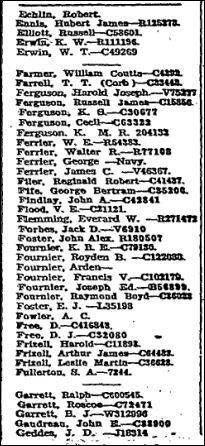
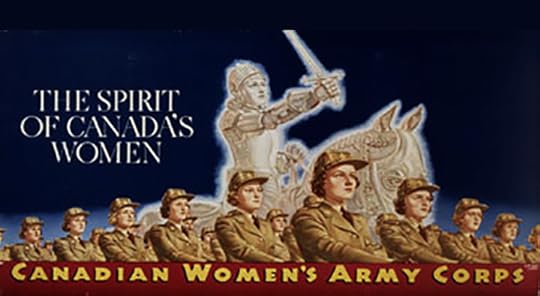

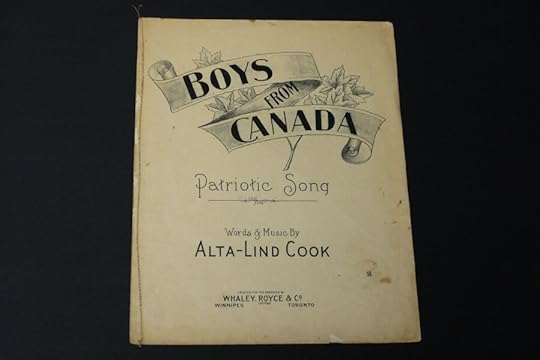



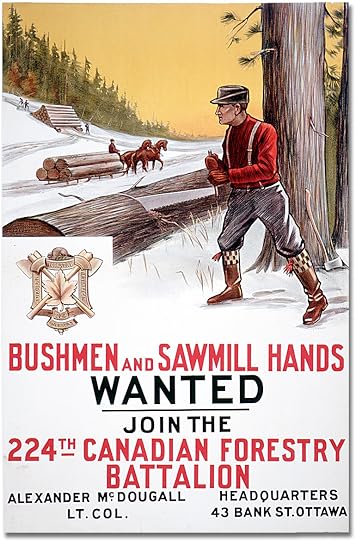
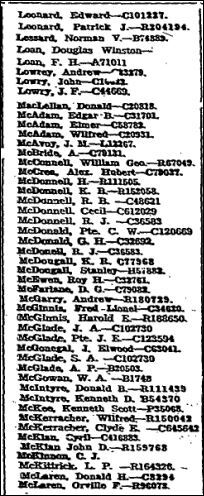

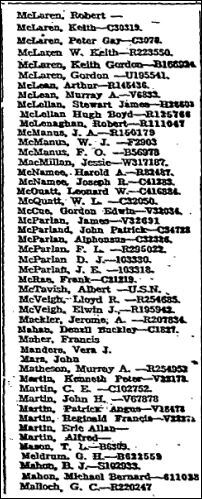

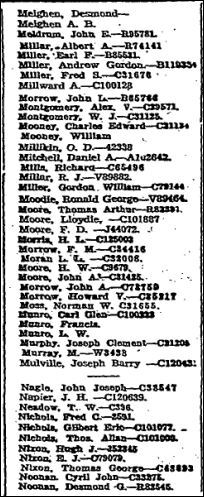
Murphy, Joseph Clement ‘J.C.’
photos submitted by: Allysa Murphy, great-grandaughter of Joseph Clement ‘J.C.’ Murphy
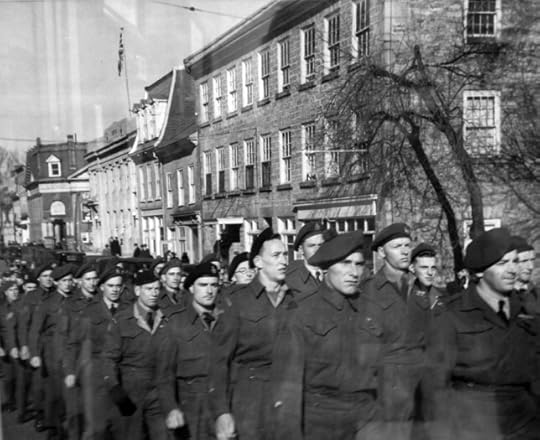
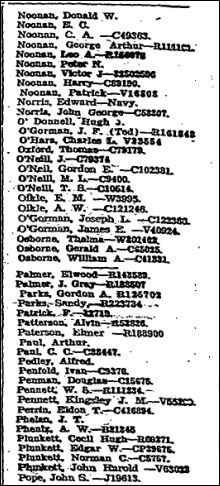
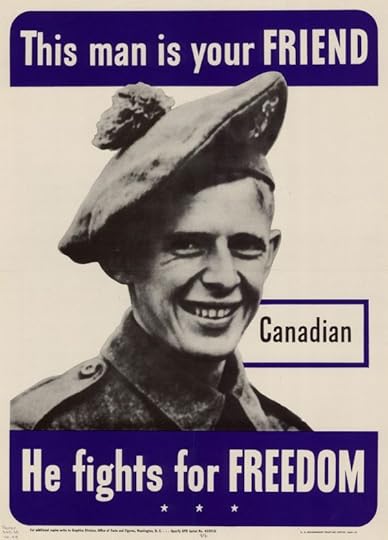
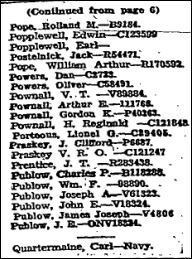
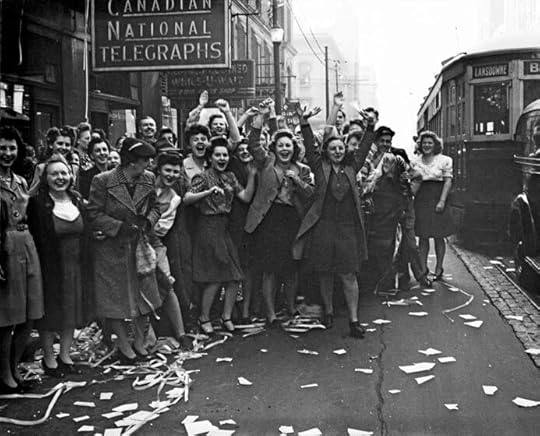

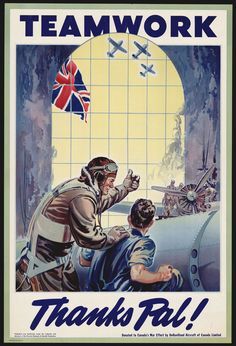






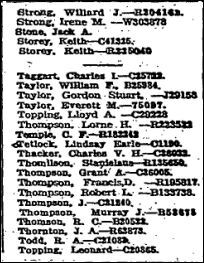
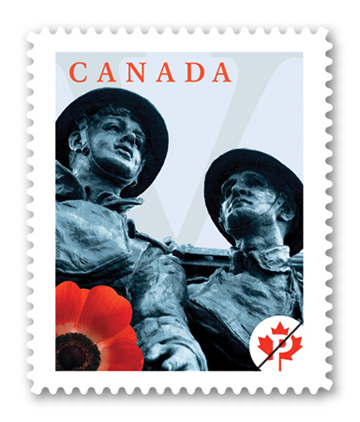
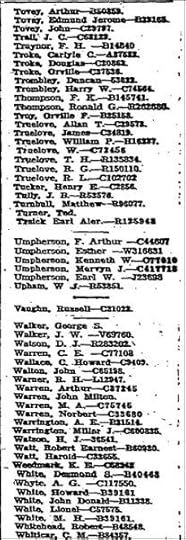
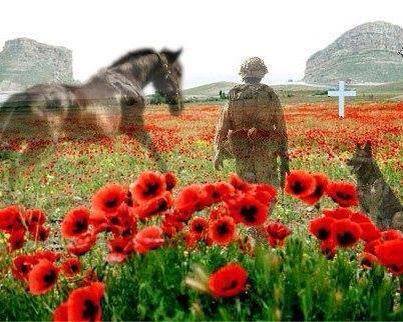
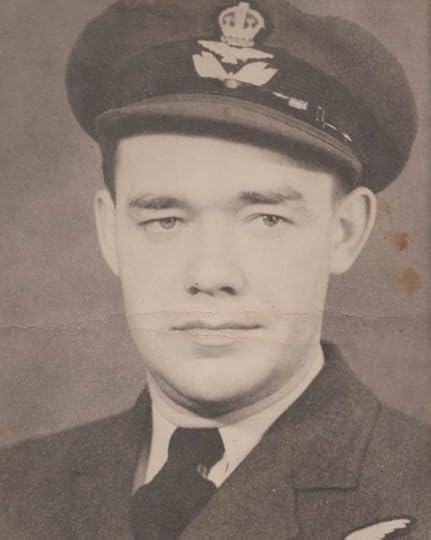
‘Perth Courier’ August 17, 1944
F.O. Robert White Now Presumed to Have Died“Mr. and Mrs. W. J. White, 15 Basin Street, have been advised by the Dept. of Defense, Ottawa, that their son, F.O. Robert White, who was reported missing after air operations over enemy territory on March 31, has now been presumed dead. A crew of seven manned the bomber which did not return and they are all presumed to have died. Shortly before he was reported missing on March 31, Bob was decorated with the D.C.M. at Buckingham Palace by the King.”
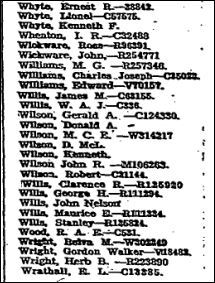
 Lanark and Renfrew Scottish Regiment “D” Company
Perth, Ontario, 1942
Lanark and Renfrew Scottish Regiment “D” Company
Perth, Ontario, 1942

……………………………..
Missing from the Perth Courier’s list, but not forgotten:Barrie, Henry, served in both WWI and WWII
Henry BarrieHenry Barrie is in the top row, second from the left(submitted by his grand-daughter Elaine Delisle)Burns, George
(submitted by Brenda Burns)Ferguson, Robert
Frizell, Ernest Darou, died 1943, buried overseas.
Goodson, Renfred ‘Bob’ Arthur
(submitted by Corinne Rivington)……………………………………………………………………
Hall, George Cecil
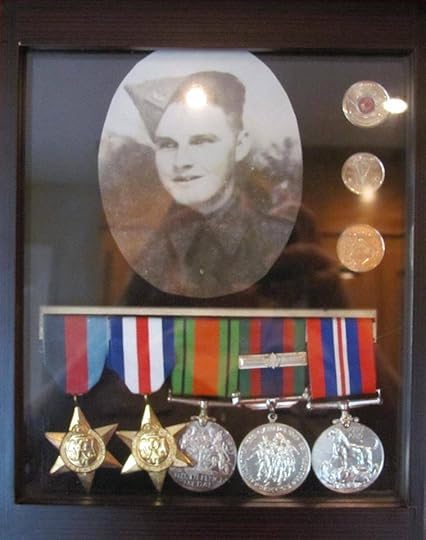
…………………………
Kanelakos, James; Flight Sergeant, DFM (Distinguished Flying Medal), POW
Laroque, Kenneth Joseph
Lee, Joseph Patrick
McGrattan, Kenneth Merle (Gillies Corners)
McGrattan, Marguerite Pauline
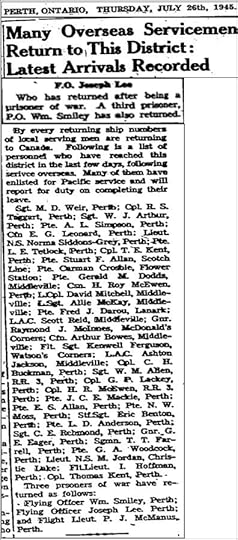
“Ormond’s war record shows that he landed in Sicily, and served throughout Italy, France, Germany, Belgium and Holland. Before he passed I asked him where he was when it was announced the war was over. His face lit up and he said, “I know exactly where I was. Nijmegen Holland.”
“Ormond Paul came home on the ‘Queen Elizabeth’, and was given a package with the Christmas dinner menu, a calendar for 1946, and a photo of the ship packed with soldiers.”
(notes from Roy Paul)
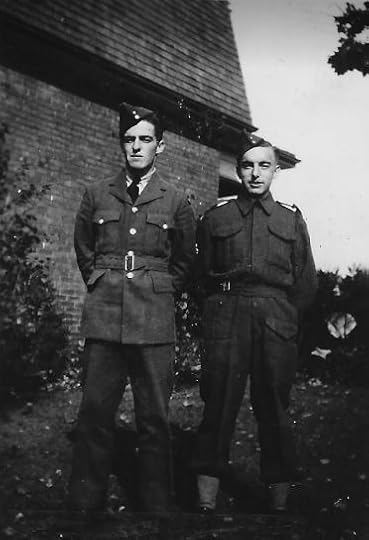
Paul, Ormond M.F. C-28750
Paul, Wilmer,
(from Poland, Ontario, photos submitted by Roy Paul)………………………………………………………
Rattray, Howard John
Rattray, Willard Arnold
Rattray, Clarence William
Rattray, John Elmer
…………………………………………………….
Sweeney, Norman
Norman Sweeney
photo submitted by his daughter, Norma SweeneyWeir, William Devlin
……………………………………………………..
Wood, Alva
Wood, Eldon ‘Pete’
Wood, Elva
(from Snow Road) – submitted by Trish Fournier……………………………………………………….


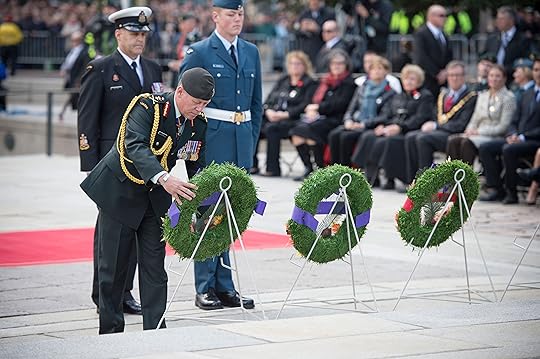
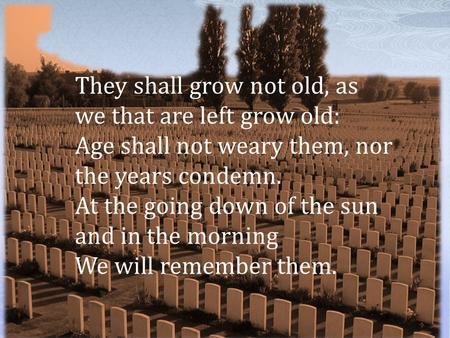
* * *

* * *

……………….
Local War Heroes: Kyle, McGlade, and DicolaFRIDAY, MAY 14, 2010
Article by ‘St. John’s School’, Perth, Ontario:
St. John’s School Playgroundto Be Dedicated to Local Fallen Heroes and Veterans“The St. John Playground Committee has chosen two local fallen Canadian Forces heroes and one local Veteran to be part of the dedication of their new playground.
The fundraising efforts for the new playground at the school taking place under the auspices of the Let Them Be Kids foundation dictates that any new playgrounds built are dedicated to a Canadian Forces fallen soldier or veteran from the area. After much reading and research by a Grade 6 class at the school, St. John’s has chosen Flying Officer William Kyle, Corporal James Michael McGlade, and veteran Corporal Francis DiCola to immortalize in the dedication of their new play structures.
Flying Officer William Kyle, born and raised in Perth, flew Dakota aircraft as a member of the RCAF 453 Transport Squadron based out of Tulihal, India. His squadron was responsible for moving freight and soldiers to and from various bases throughout the South Pacific. On June 21, 1945, a mission Kyle was on failed to return. The story of the missing aircraft came to prominence more than 50 years later, when the wreckage of the missing plane was discovered in the jungles of northwestern Myanmar (Burma), and Veterans Affairs Canada sought to uncover the wreckage and bring it home. Flying Officer Kyle’s watch, found at the scene, allowed Veterans Affairs to identify the crew and the plane.
Corporal James Michael McGlade, born in Perth and a graduate of St. John Separate School and PDCI High School, served the Canadian Forces as a member of the Royal Hamilton Light Infantry. Corporal McGlade signed up for the military in 1940 and was deployed overseas in 1942. Stationed in Antwerp, Belgium, Corporal McGlade’s regiment was responsible for the liberation, capture and preservation of the vital harbour and dock facilities at Antwerp. He was killed there in 1944 and is buried in Schoonselhof Cemetery in Belgium.
Corporal Francis E. DiCola, also a graduate of St. John Separate School and PDCI, enlisted in the Royal Canadian Air Force as a 17 year old in 1943. As a member of the RCAF Squadron 422 he was stationed at Pembroke Dock in Wales and worked as a radio operator. His job was to dispatch aircraft to various bases throughout Great Britain and the continent. While he was offered the opportunity to act as a guard during the Nuremberg Trials after the war, Corporal DiCola was anxious to return to Canada. He took advantage of the RCAF education packages offered to returning soldiers and took an economics degree at University of Toronto before returning to Perth to run the family business, DiCola Petroleum. Here he raised 7 children with his wife, Rose, and as a businessman and father, has contributed to countless endeavors in our community.
St. John’s is proud to dedicate their new play structures and schoolyard to these local Forces heroes. While the children are playing on the structures building their bodies and friendships, may they also be aware of these brave men who gave of themselves so that we could be free.”
…………………………………….
Be Sure to Visit the Perth Legion Hall of Remembrance:The Hall of Remembrance displays include artifacts donated by local veterans and their families such as war medals, letters, photographs, souvenirs, and display cabinets featuring army and navy memorabilia. The collection focuses on Perth and area’s contributions in World War I, World War II, Korea, Cold War, peacekeeping missions, and Afghanistan.
http://www.hallofremembrance.ca/exhibits/index.html
Hall of Remembrance – Royal Canadian Legion Branch 244, Perth-Upon-Tay – 26 Beckwith Street East Perth, ON K7H 1B5 Tel: 613-267-4400 (Office)………………………………………….
Library and Archives Canada Links for WWII Research:
………………………………………..
Search the Canadian Fallen Heroes Database:
Canadian Fallen Heroes Database
……………………………………………………………………………………………………………………………………………….
This tribute isin memory of all of the soldiers from the Perth areawho fought bravely for our country,so that we might live in peace and freedom.Lest We Forget………………………………………………………………………………………………………………………………………………………

……………………………………….
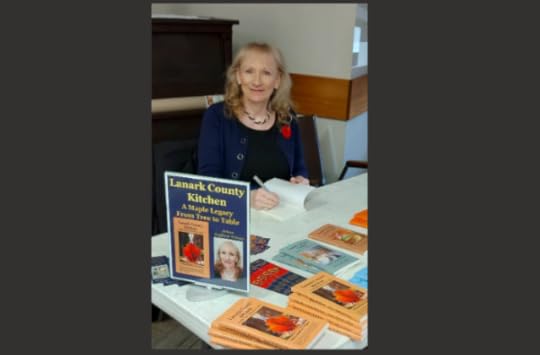
Arlene Stafford-Wilson
Honorary Life Member, Lanark County Genealogical SocietyLanark County Pioneer Families Humanitarian AwardFrancois Bregha Storyteller AwardMember, Association of Professional GenealogistsAuthor of : “Lanark County Christmas”, “Lanark County Comfort”, “Lanark County Collection”, “Lanark County Calling”, “Lanark County Classics”, “Lanark County Connections”, “Lanark County Calendar”, “Lanark County Chronicle”, “Lanark County Kid”, & “Recipes & Recollections”,”Lanark County Kitchen: A Maple Legacy from Tree to Table”,and, “Lanark County Classrooms: Remembering Our School Days”


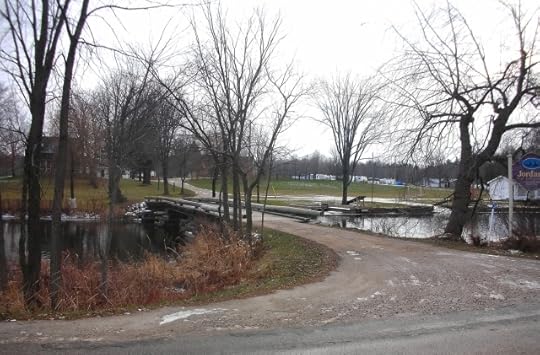
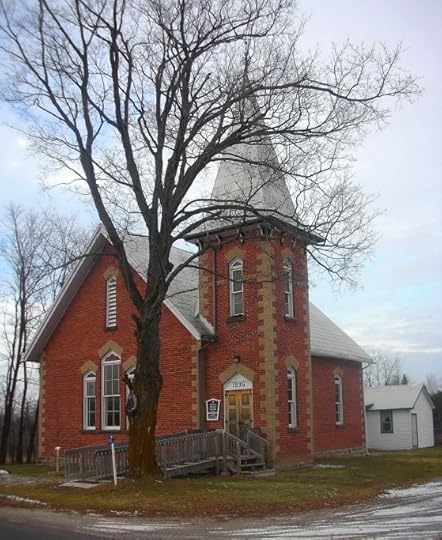
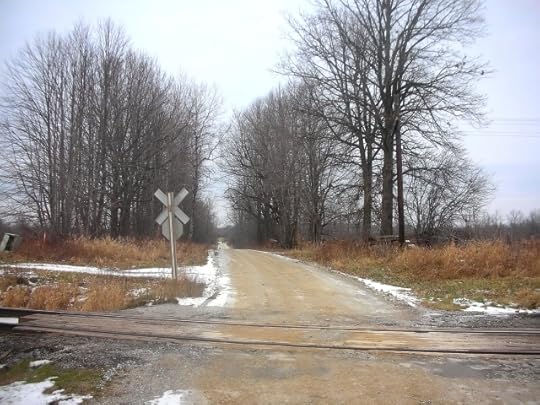

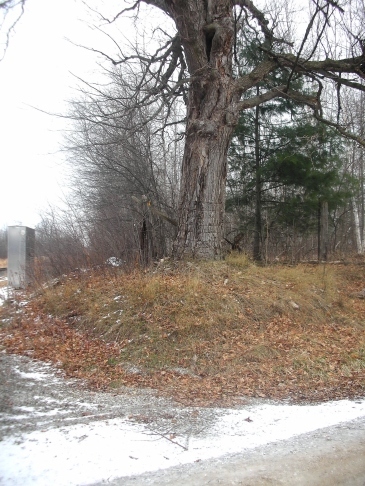
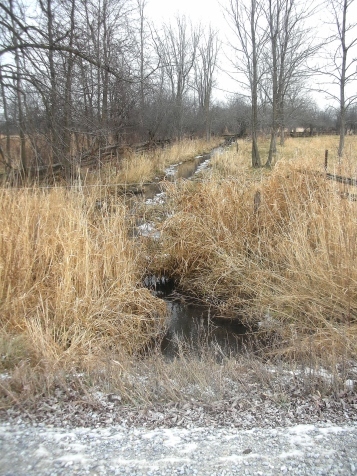


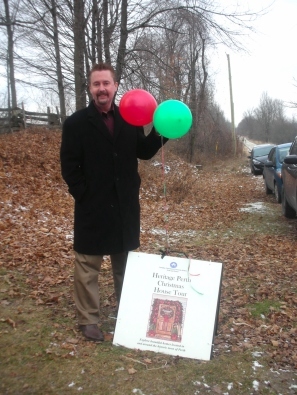
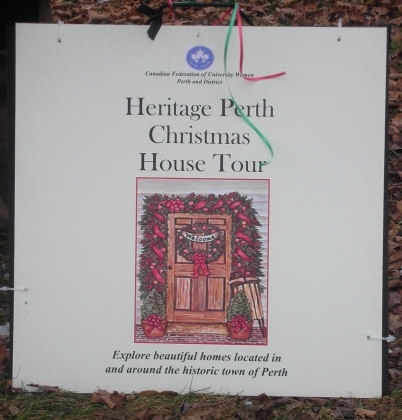 *
*
